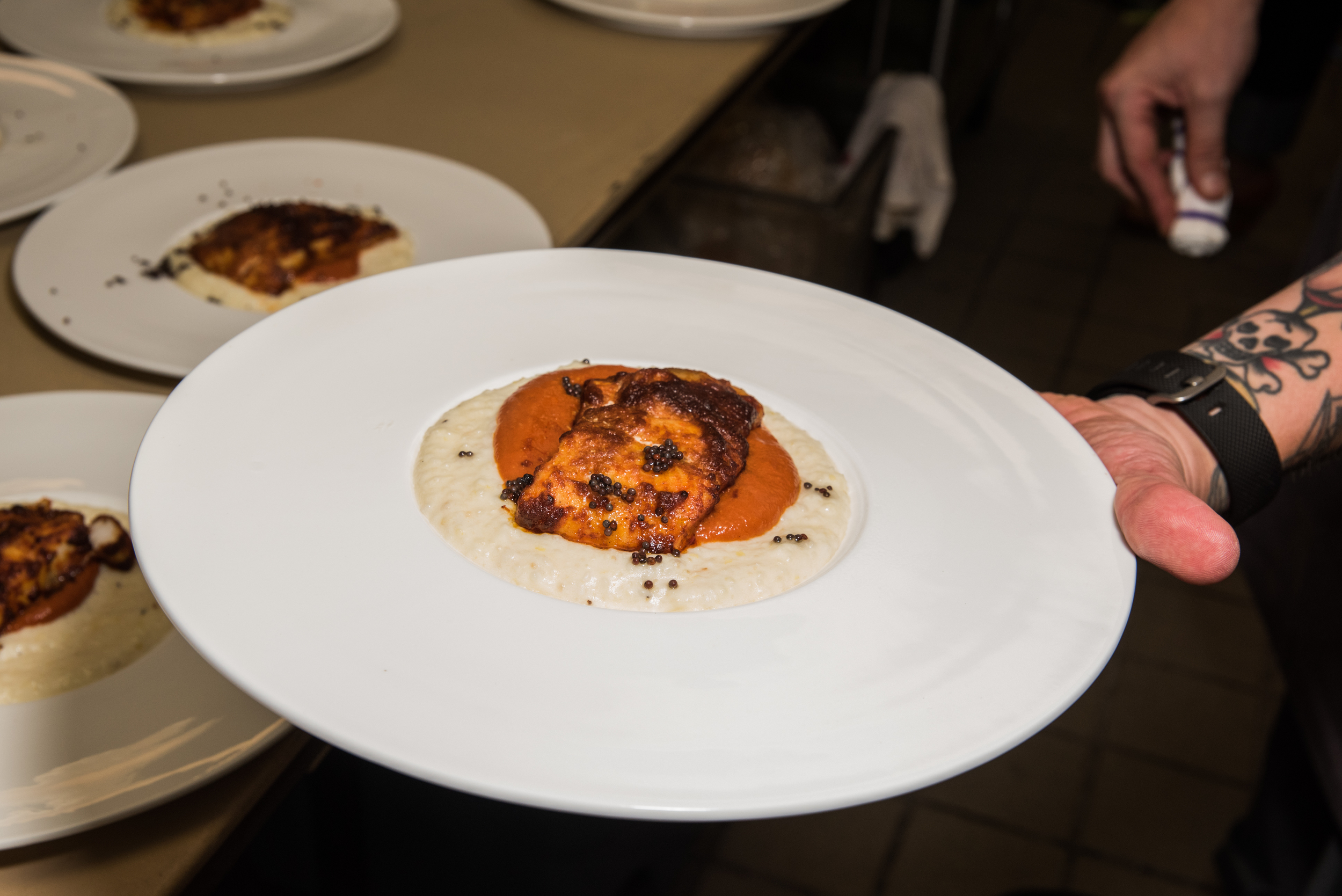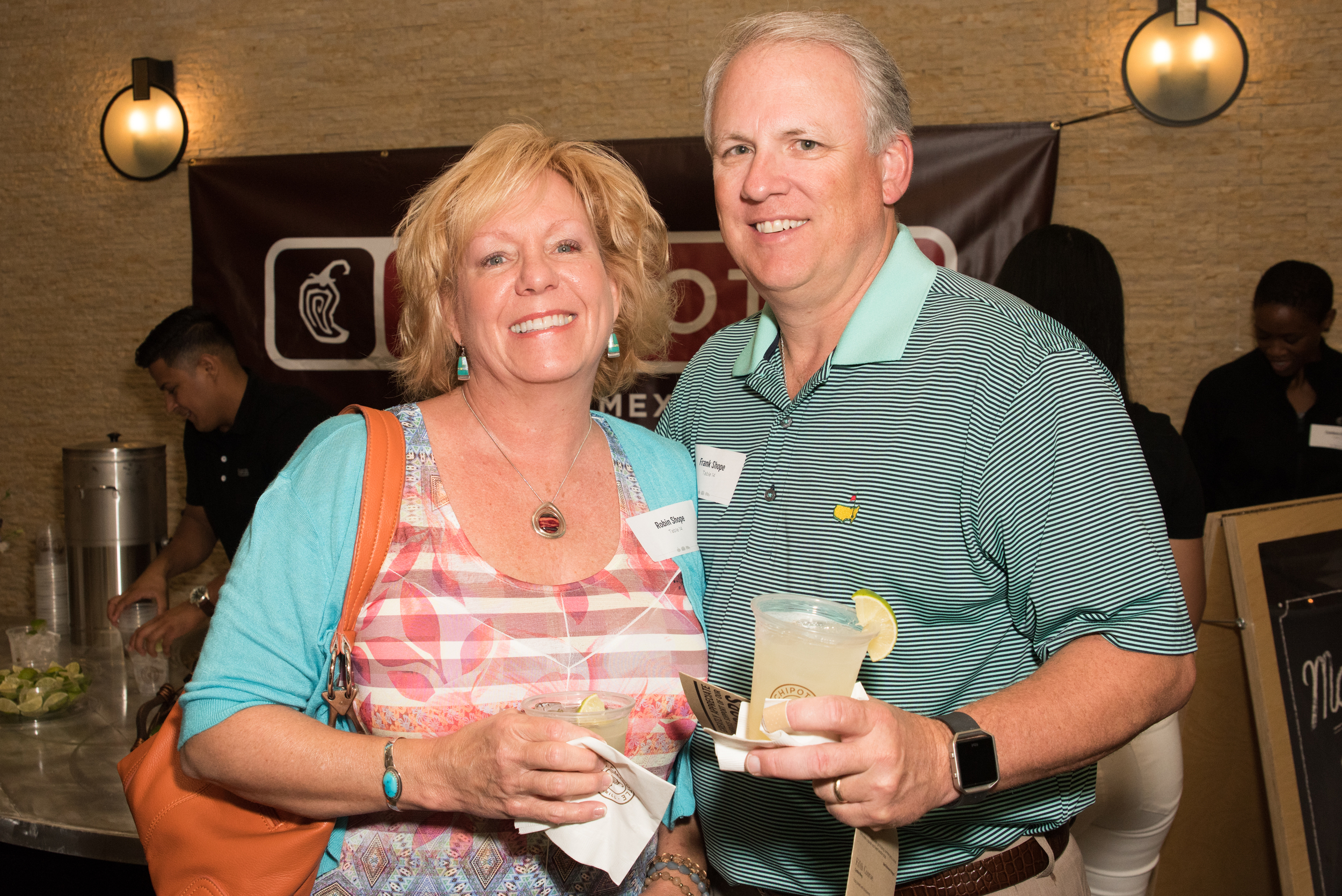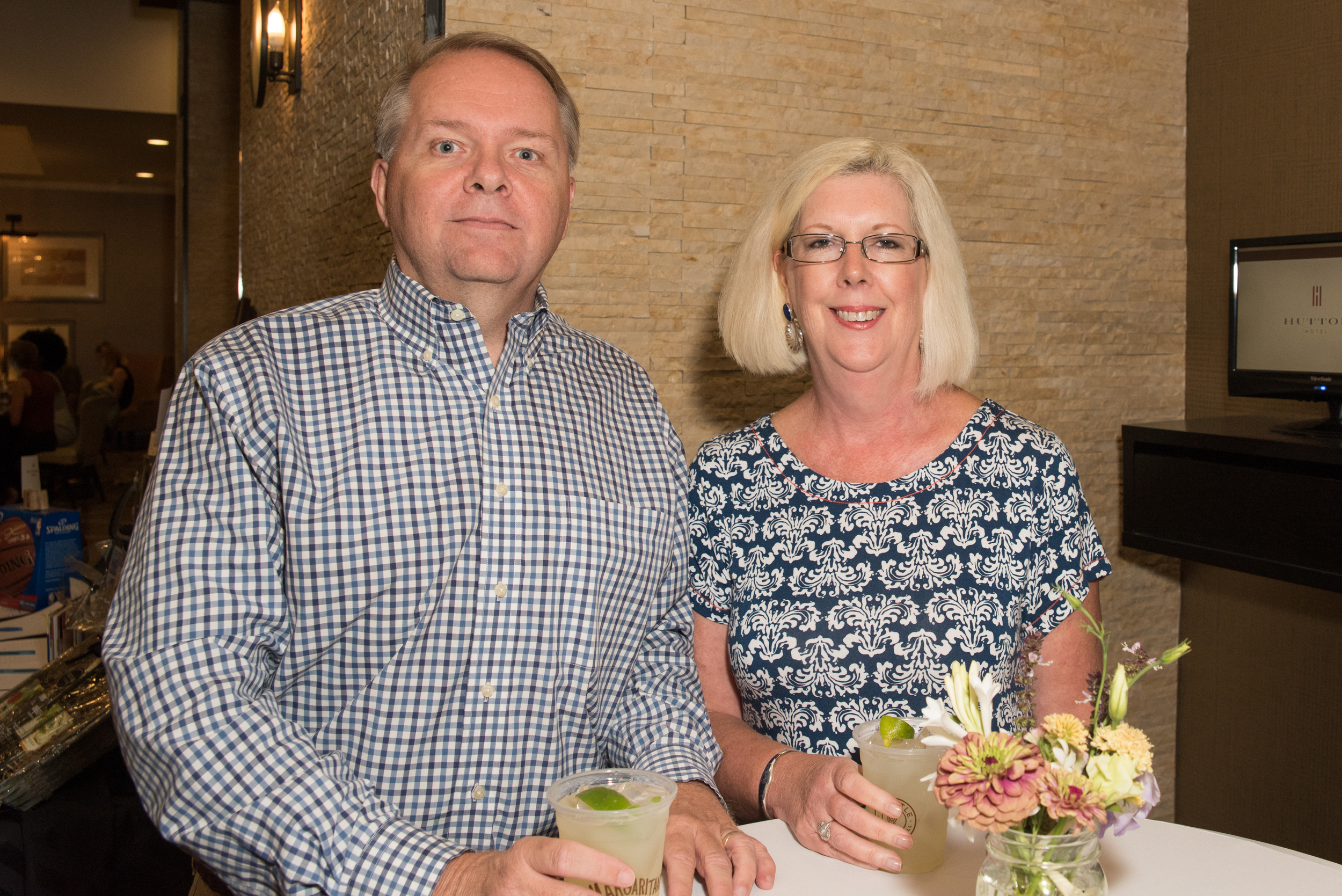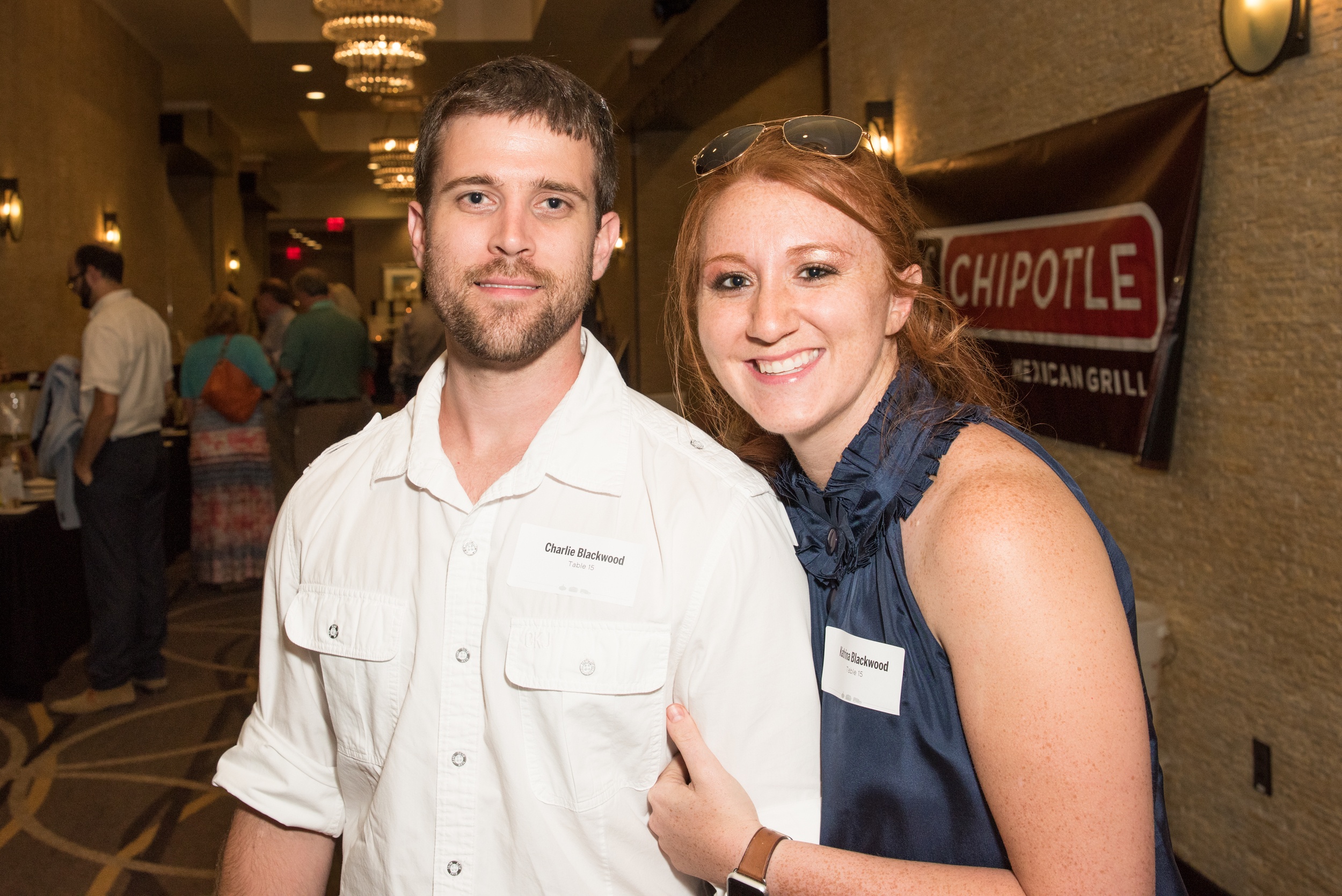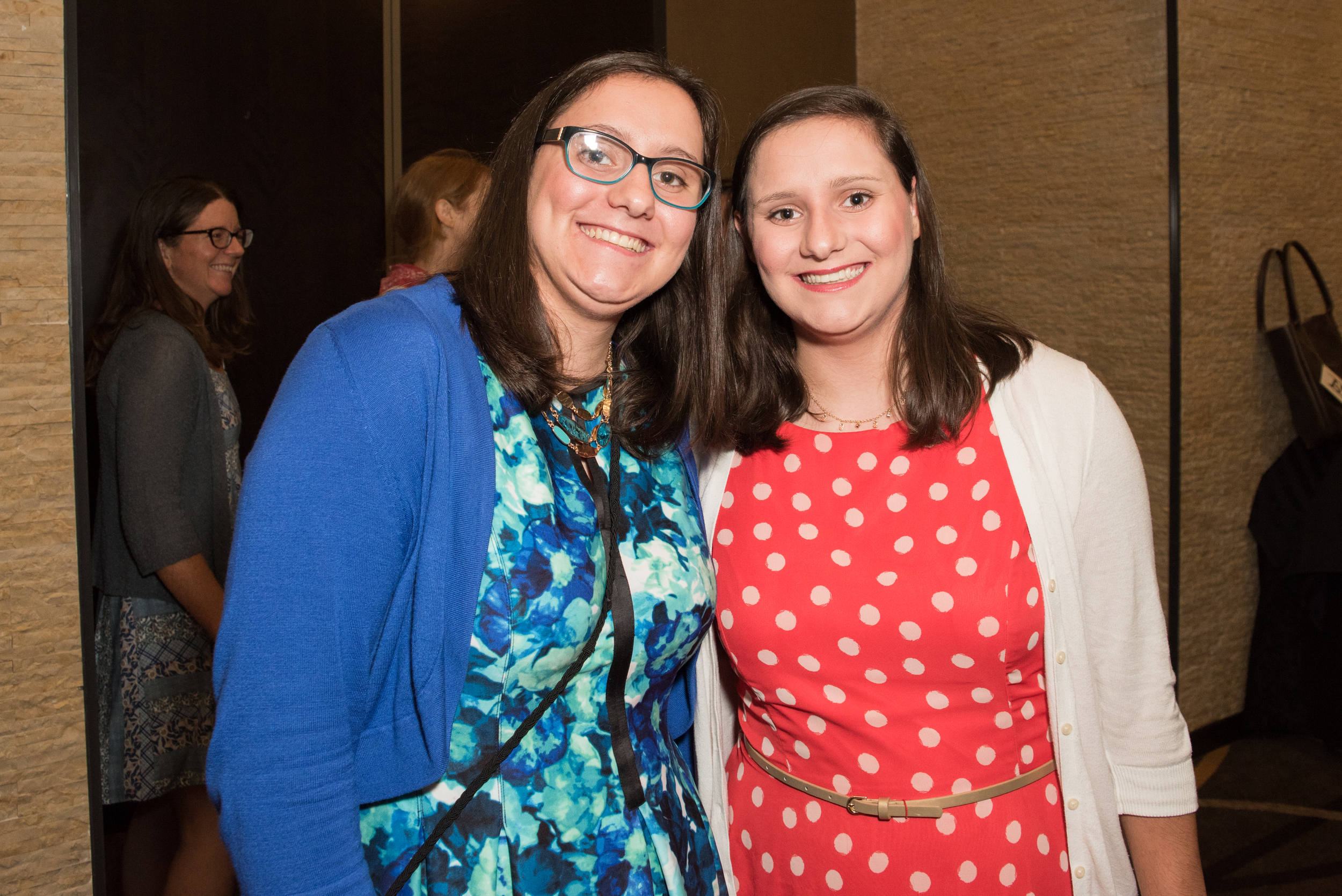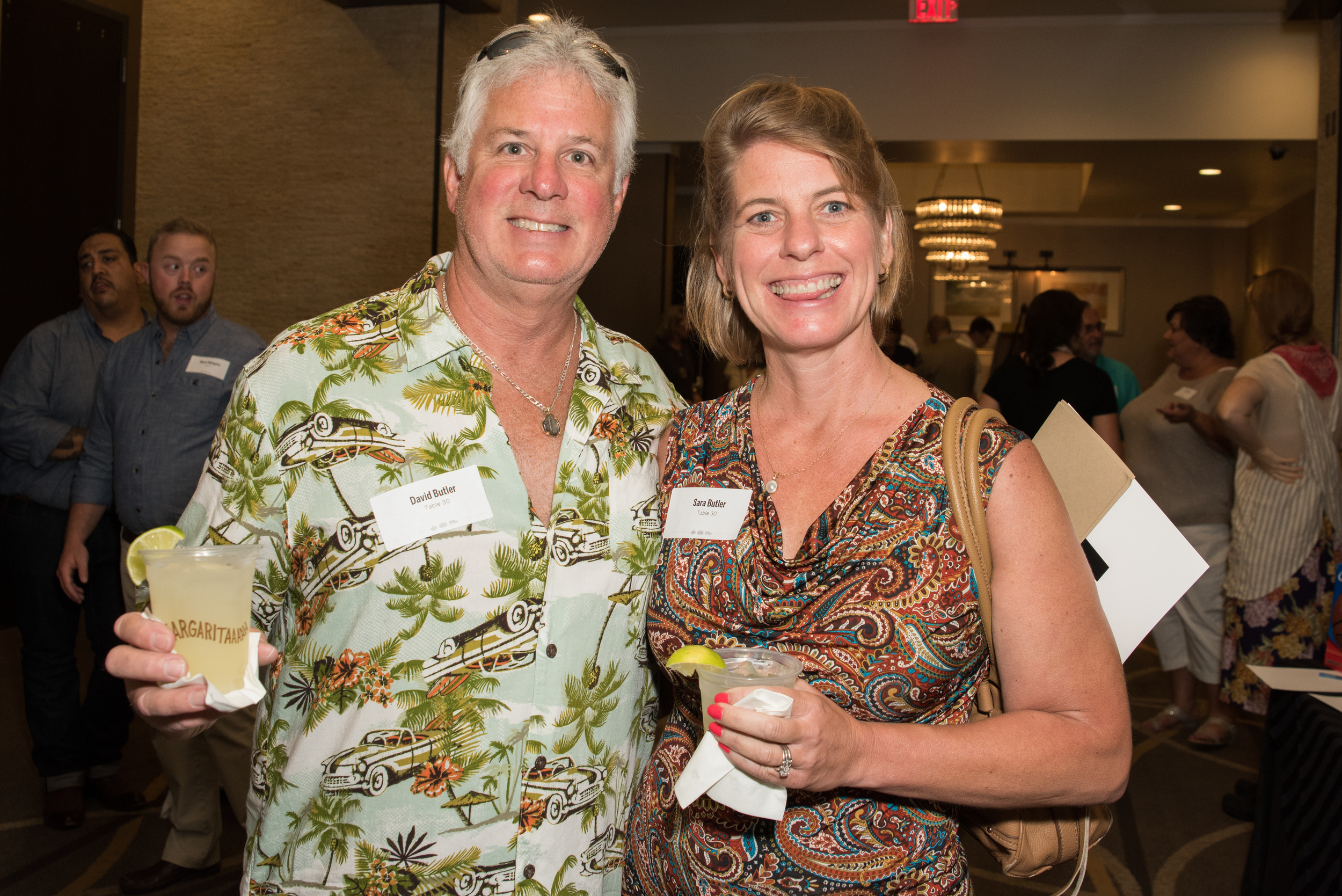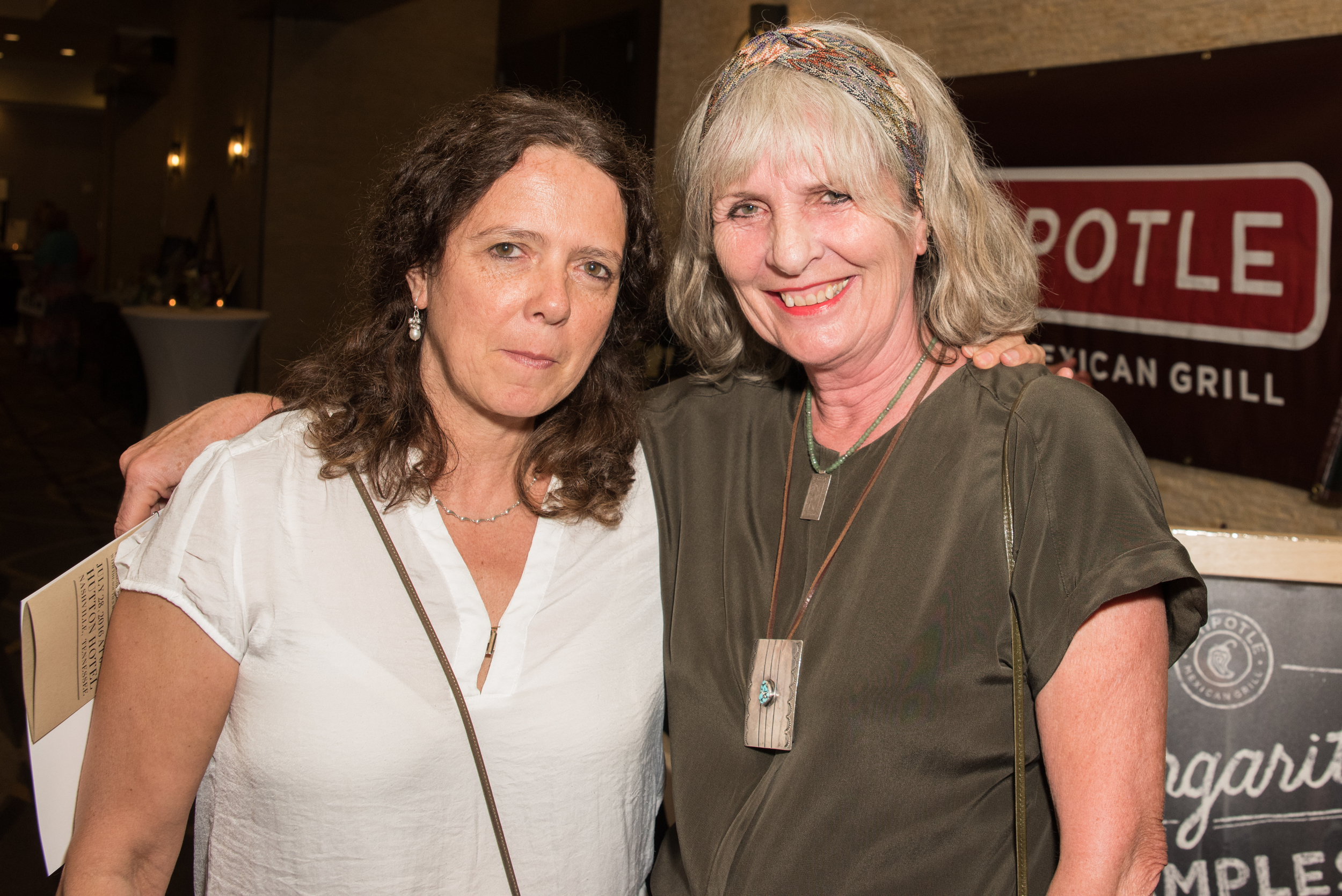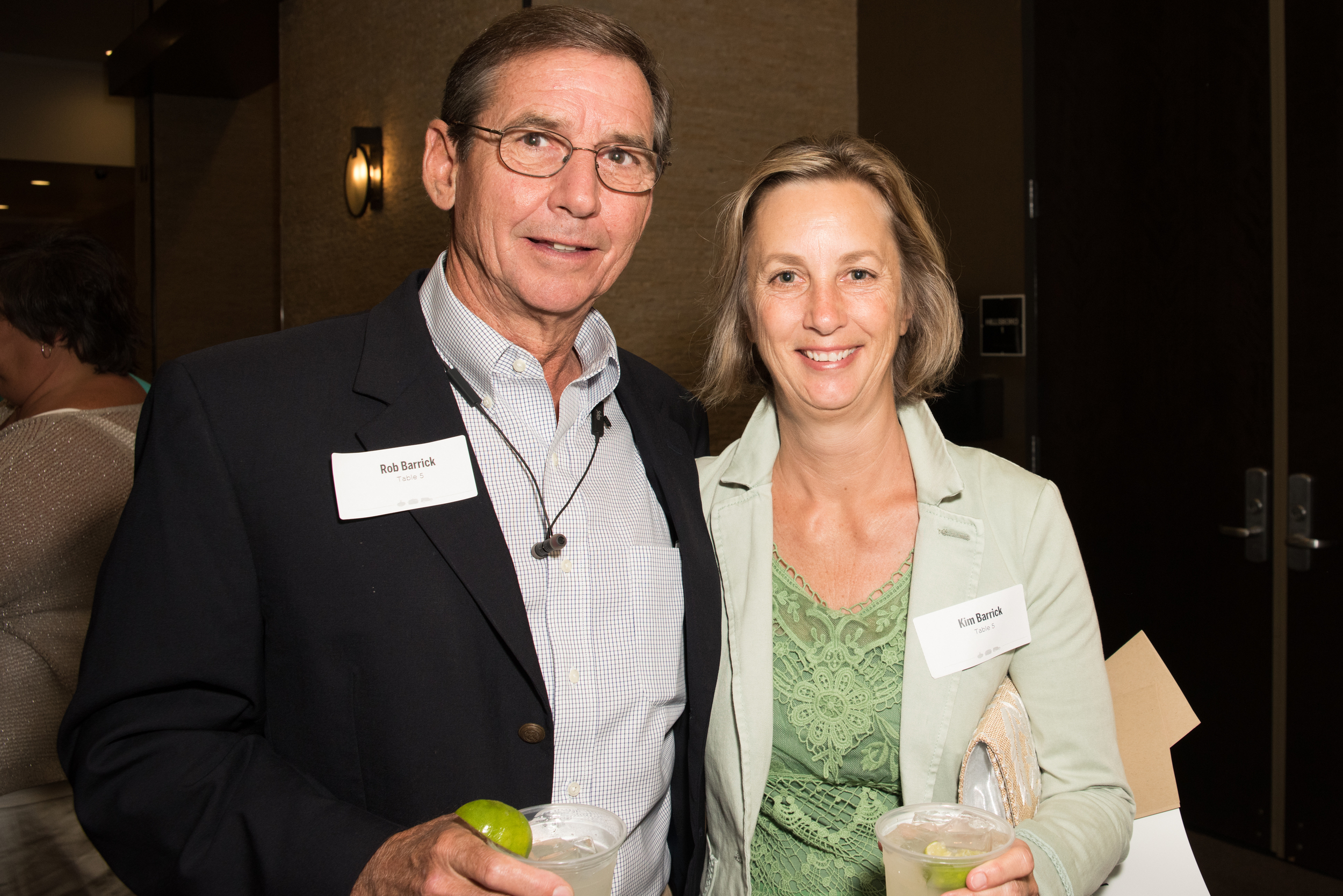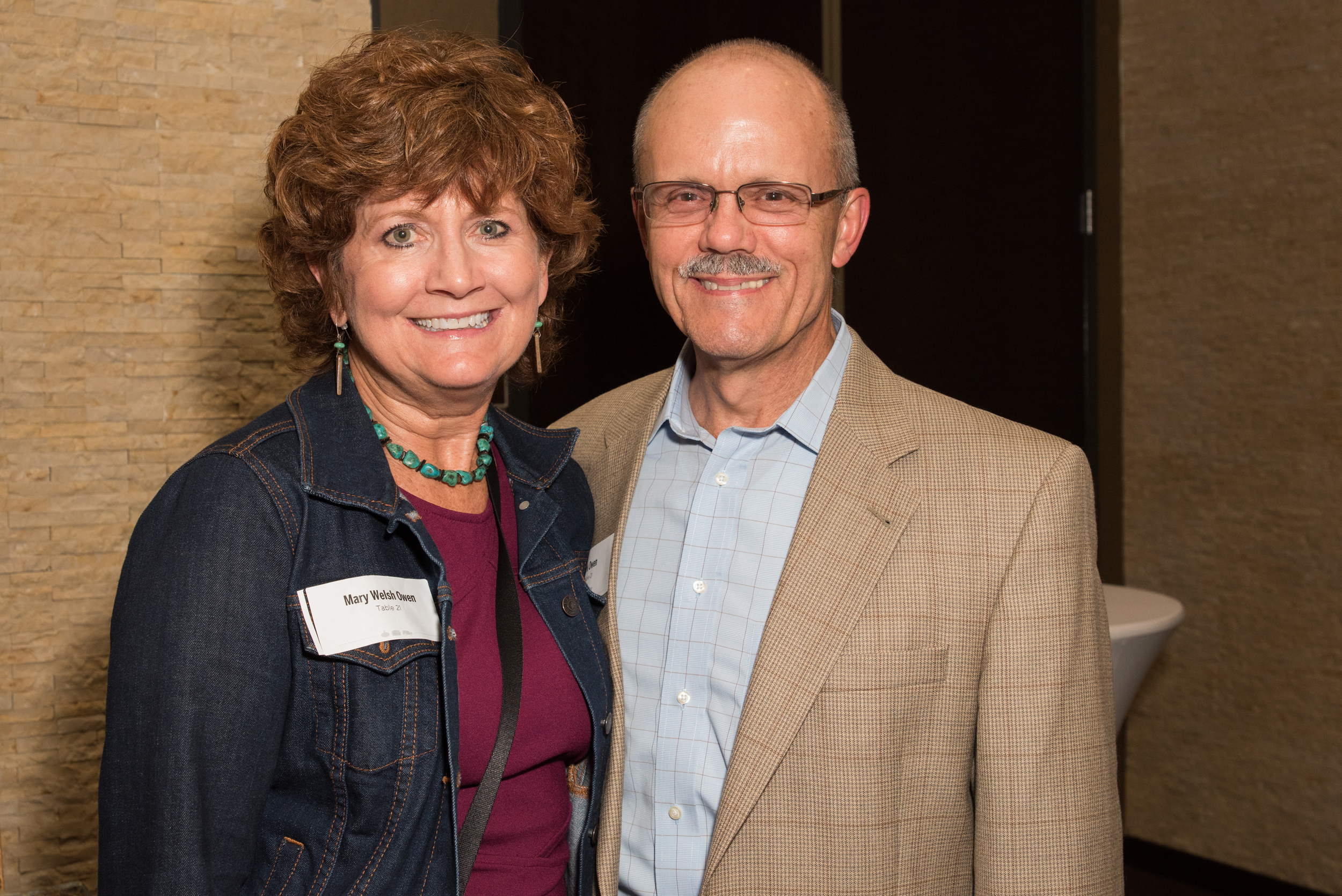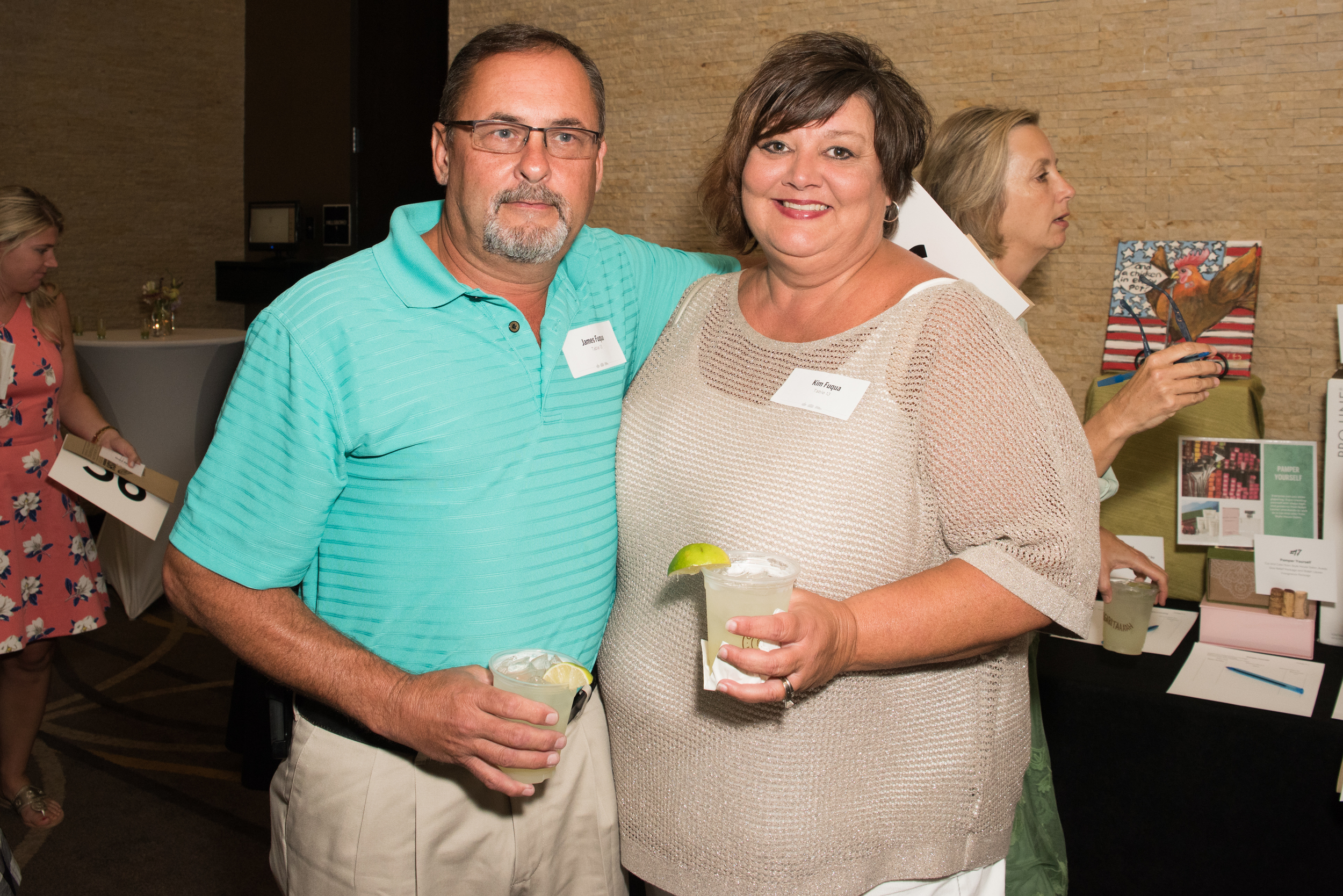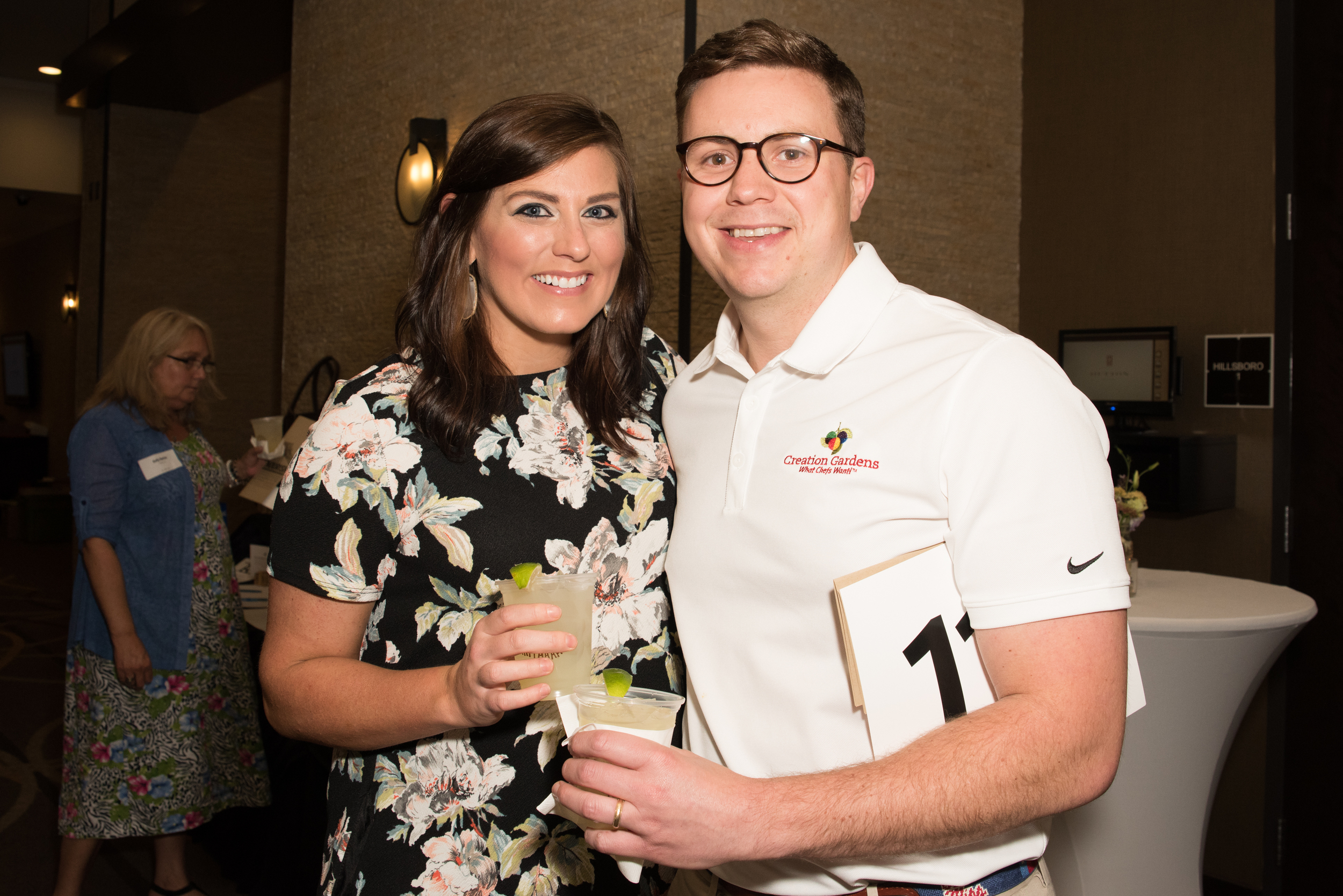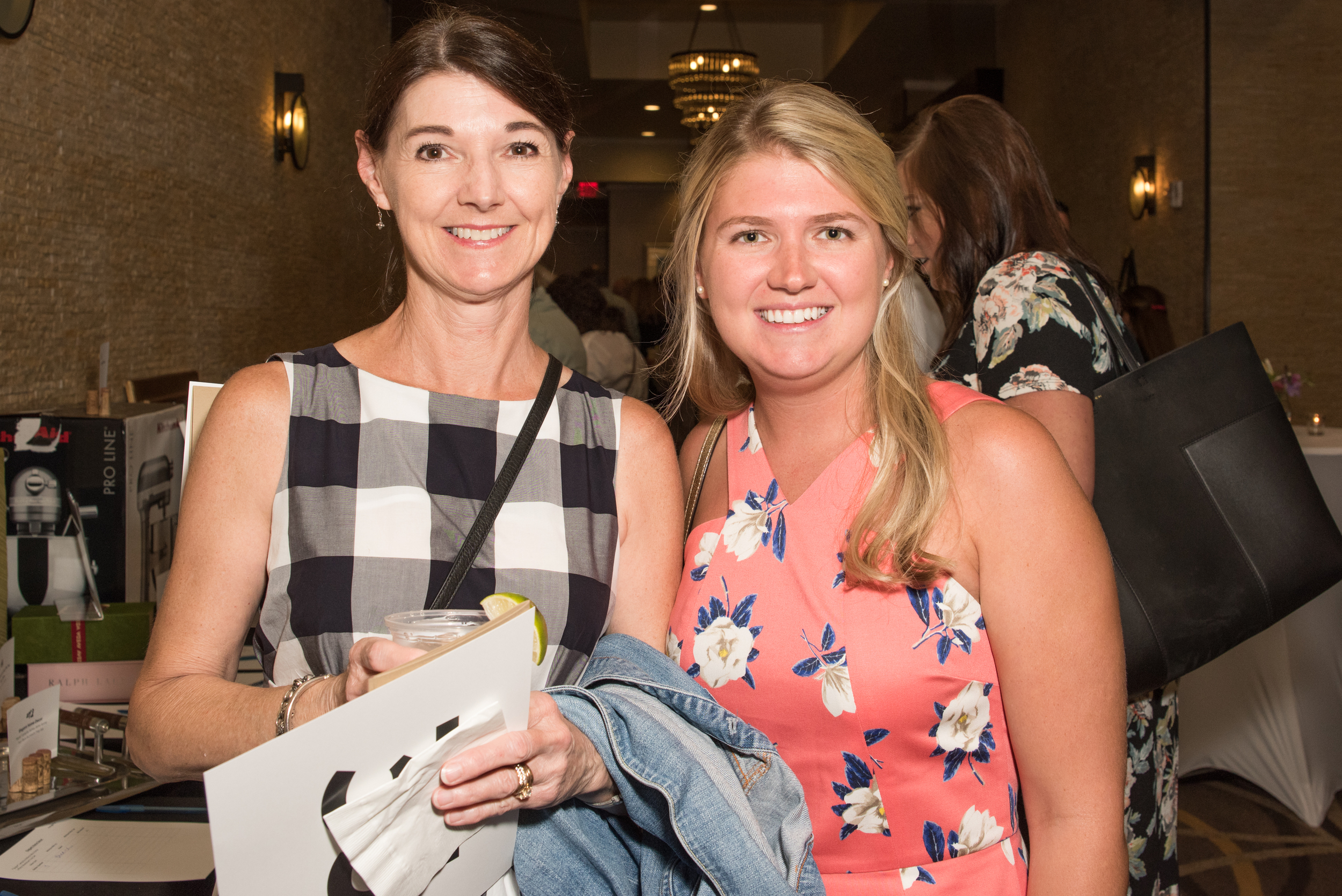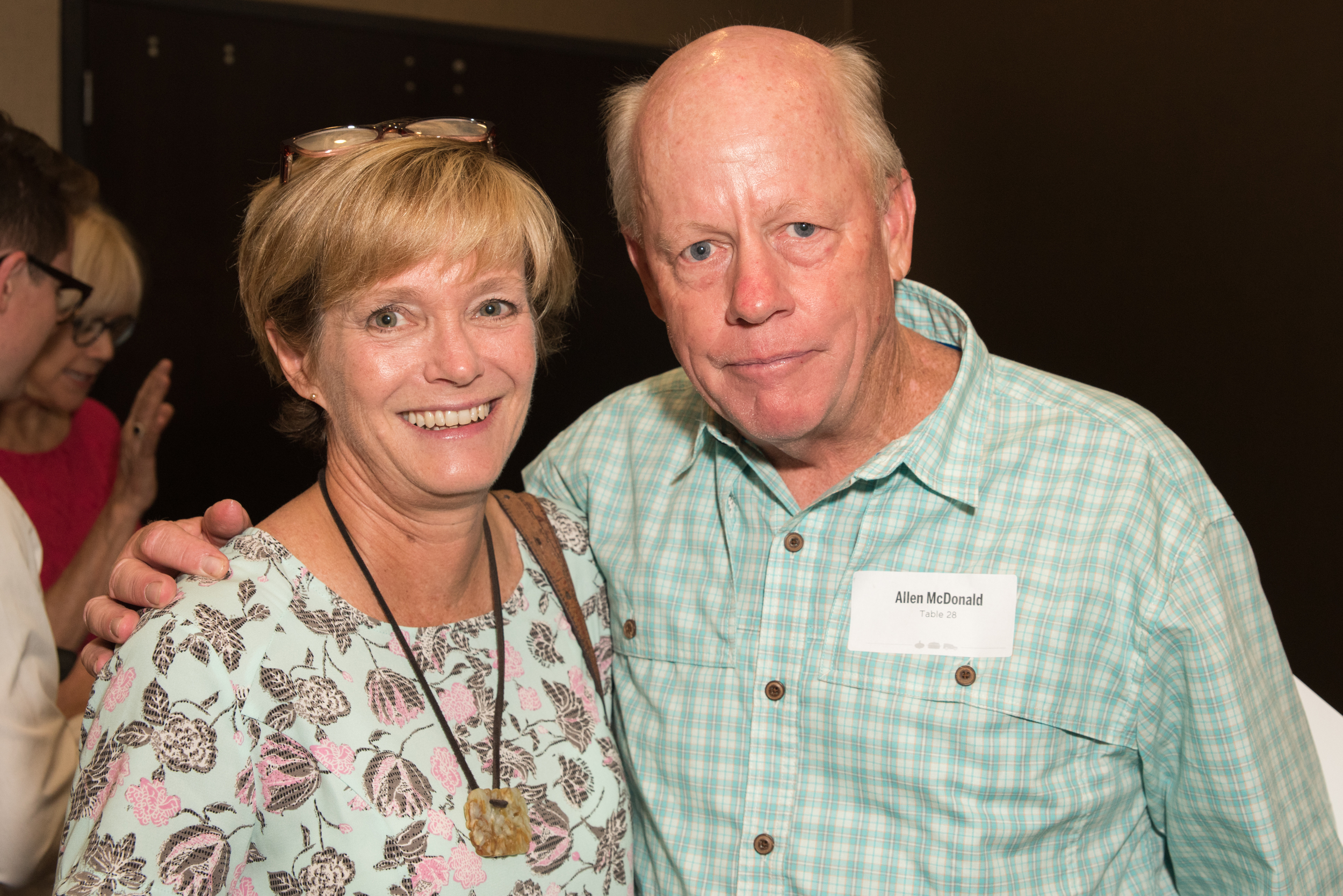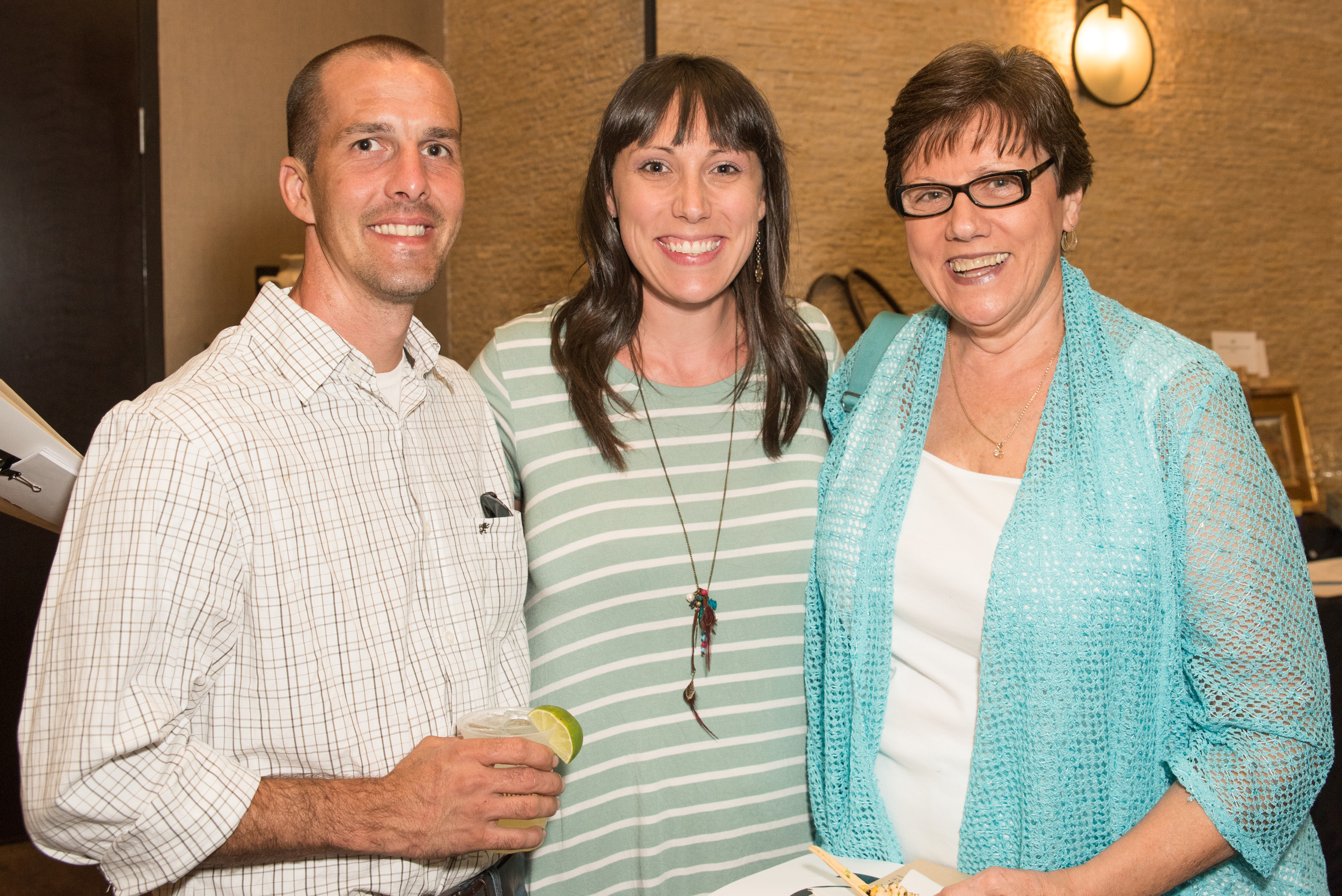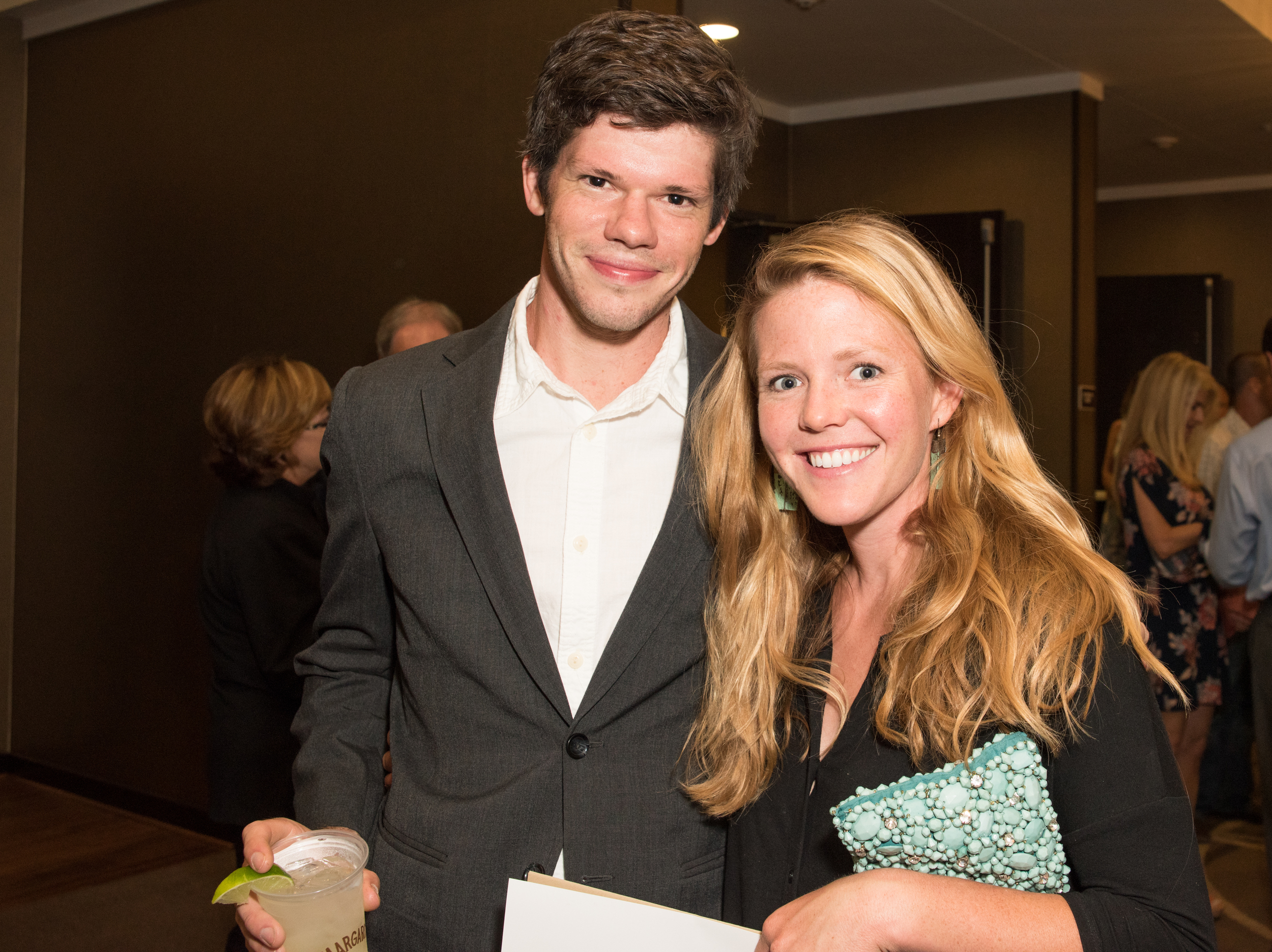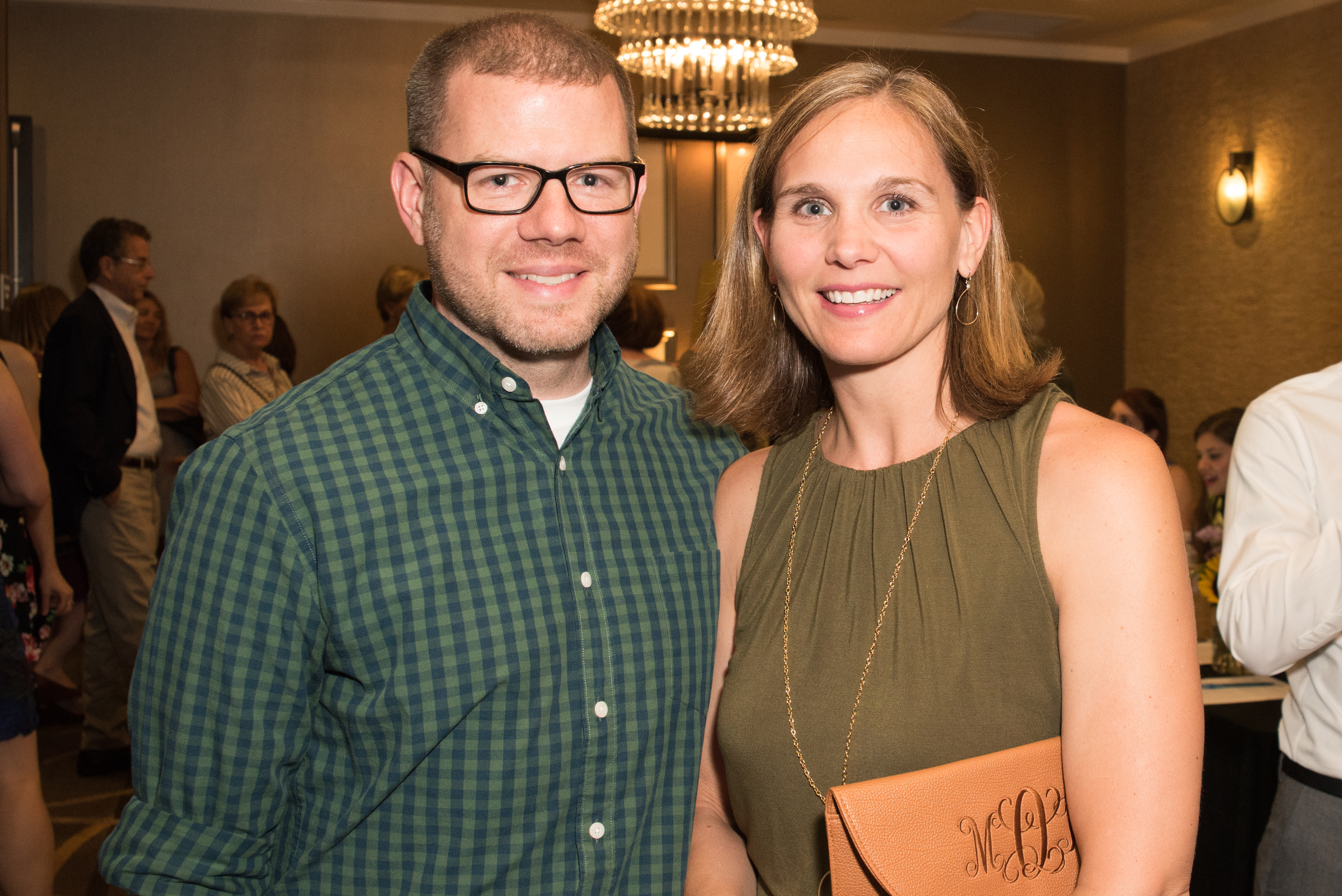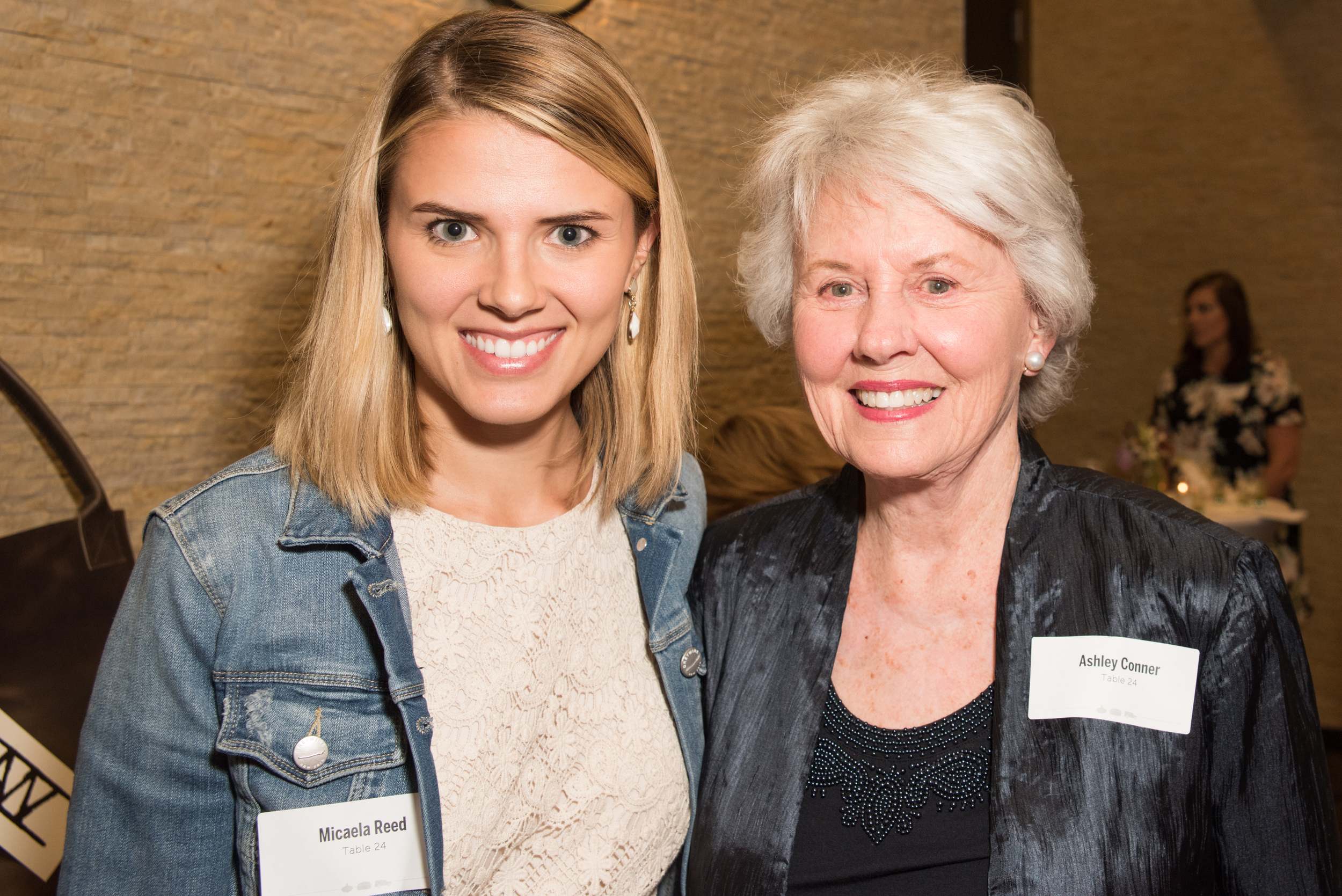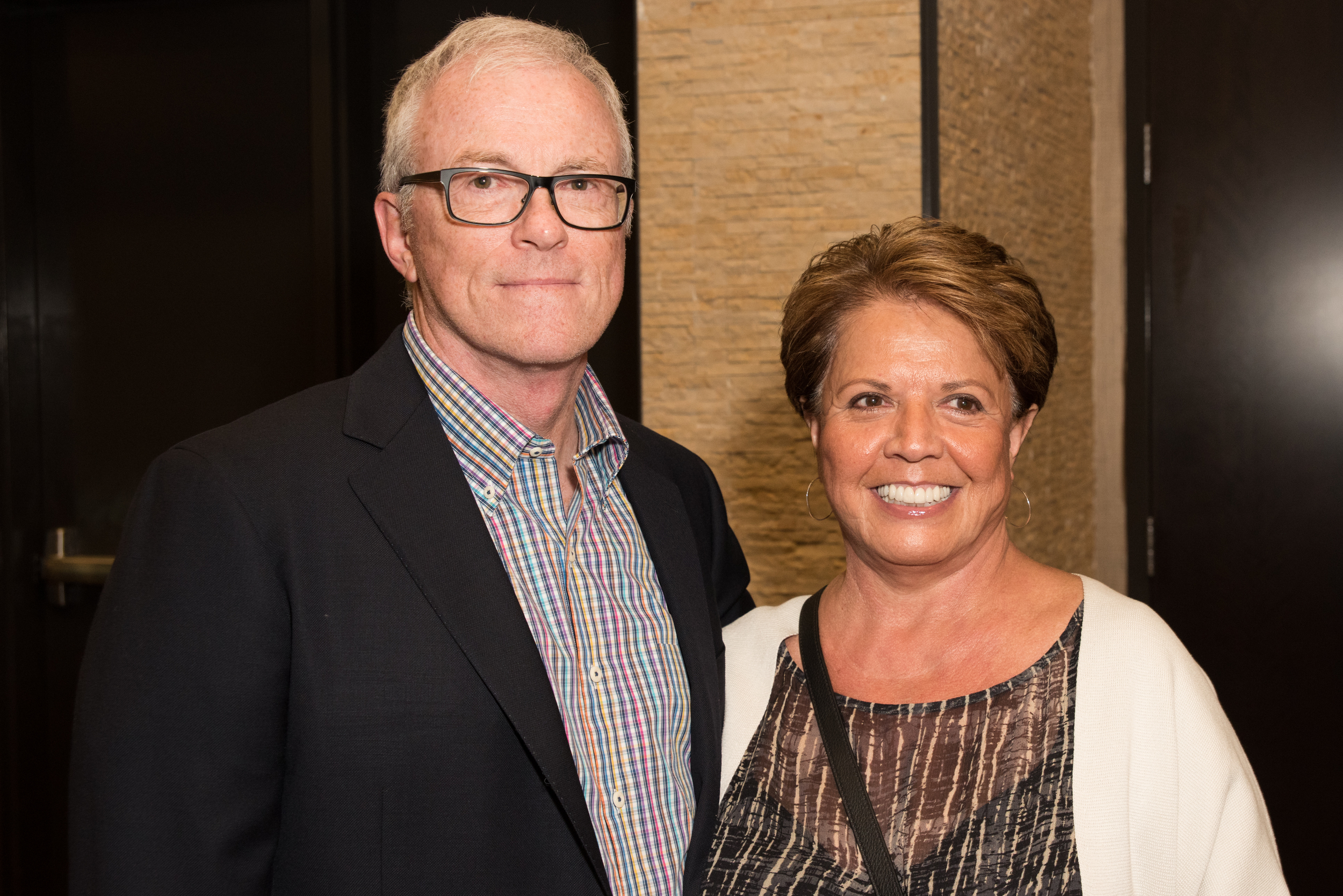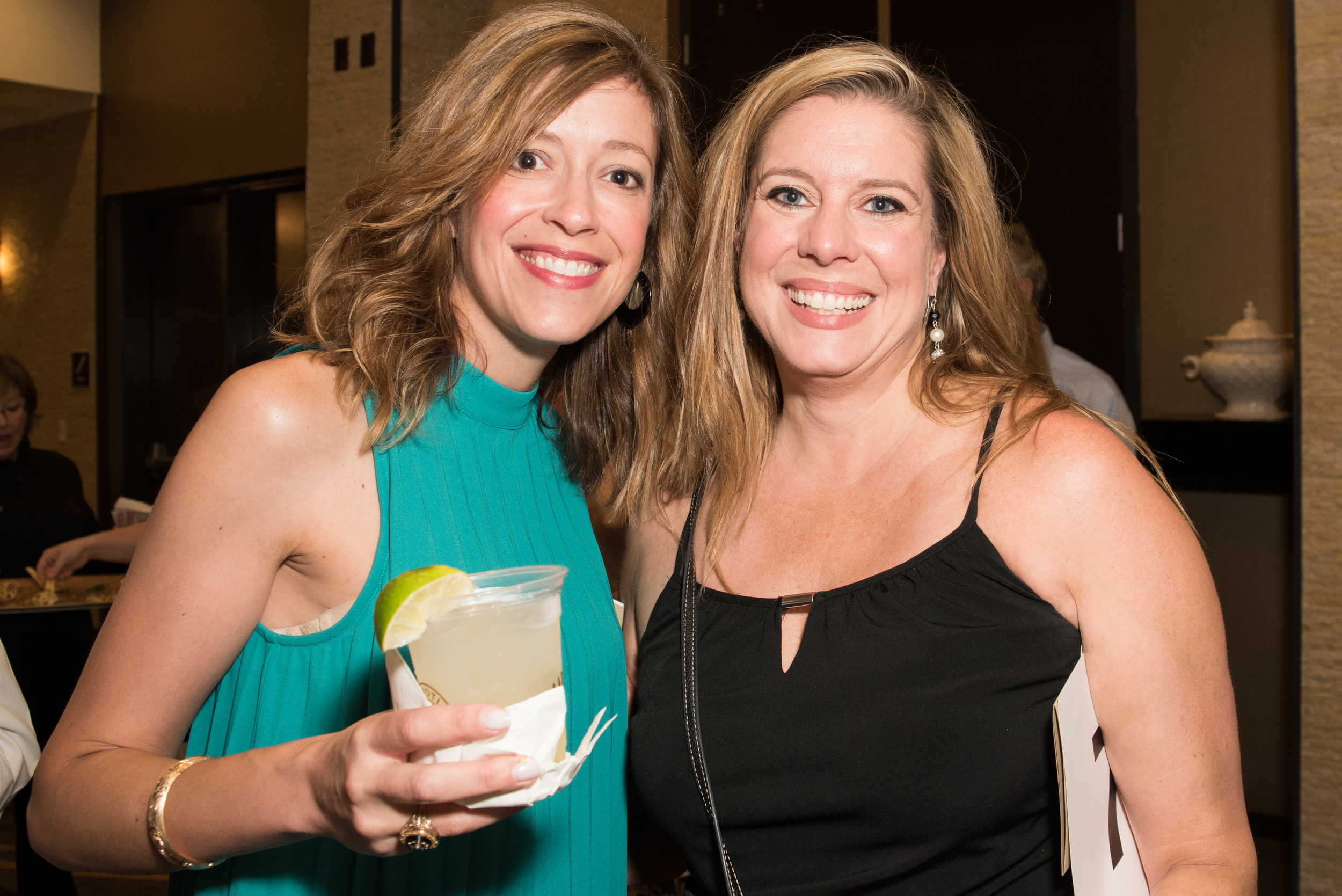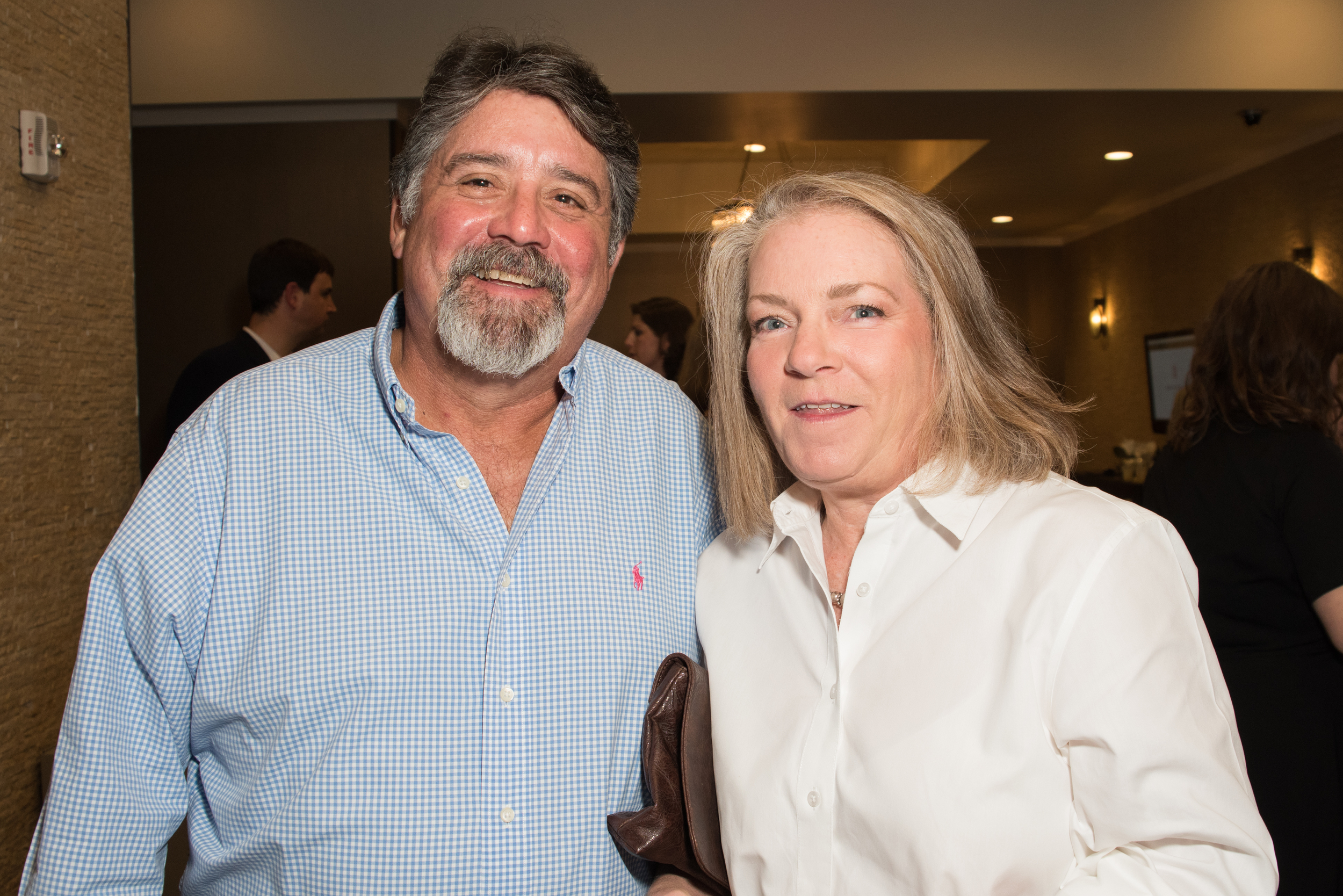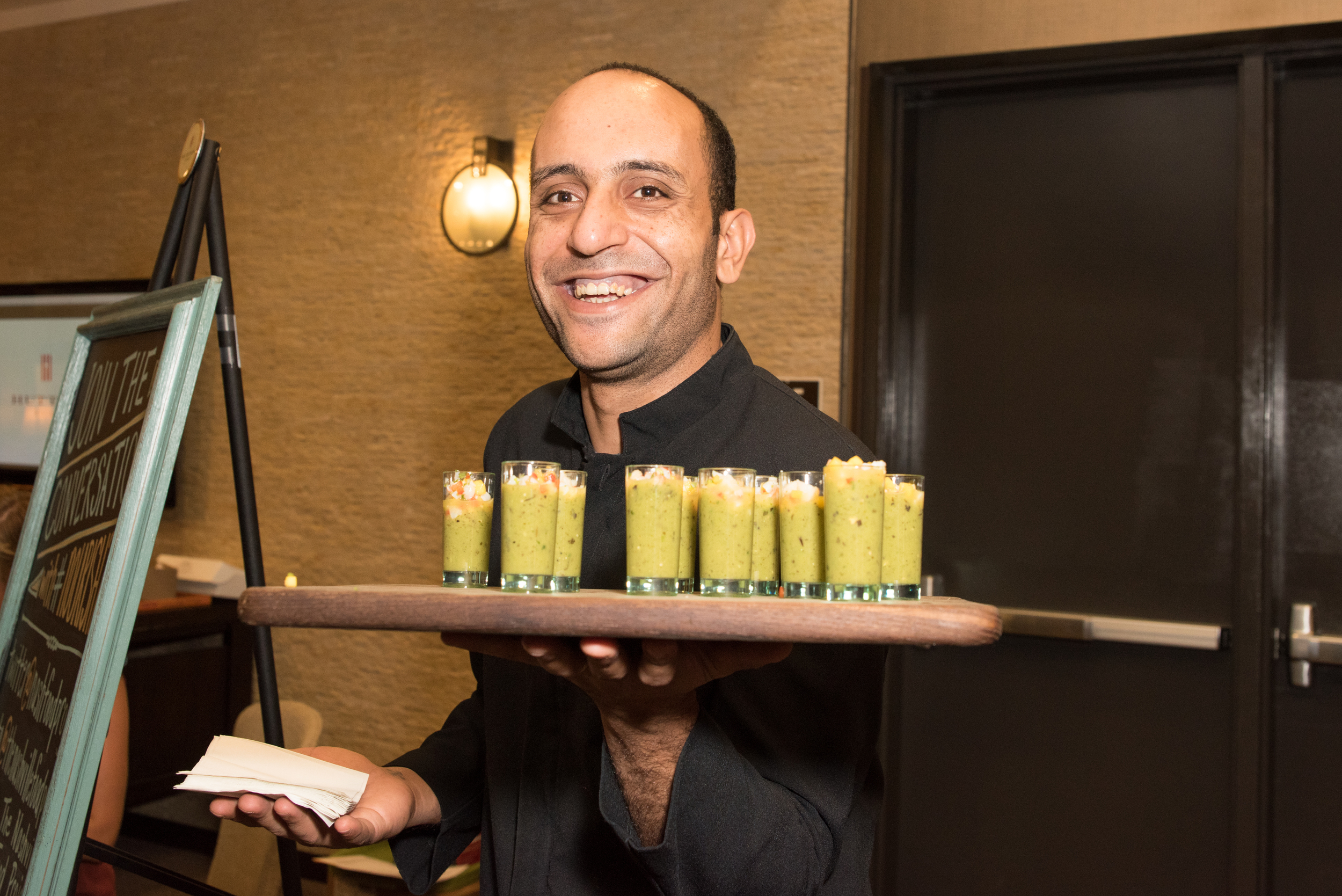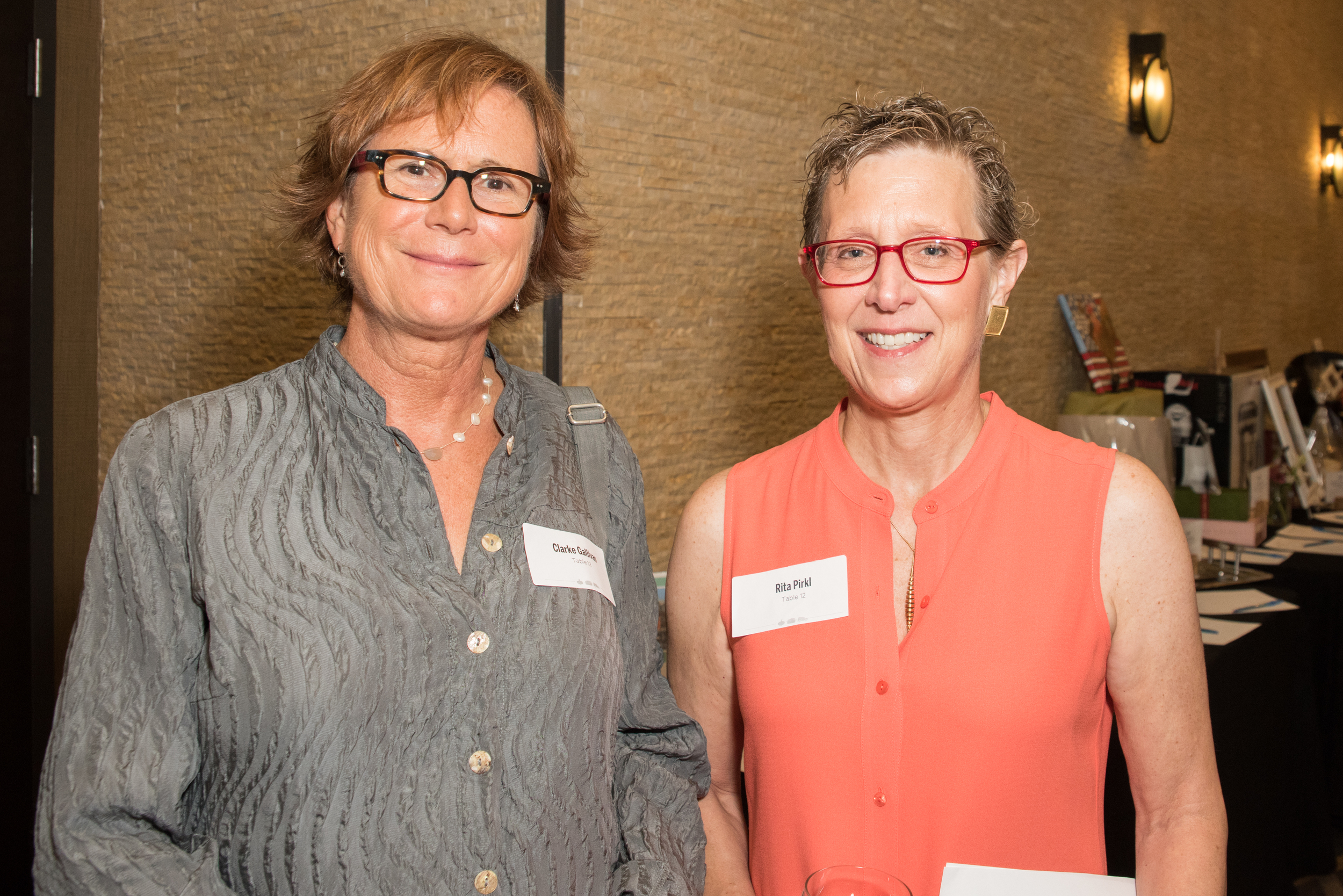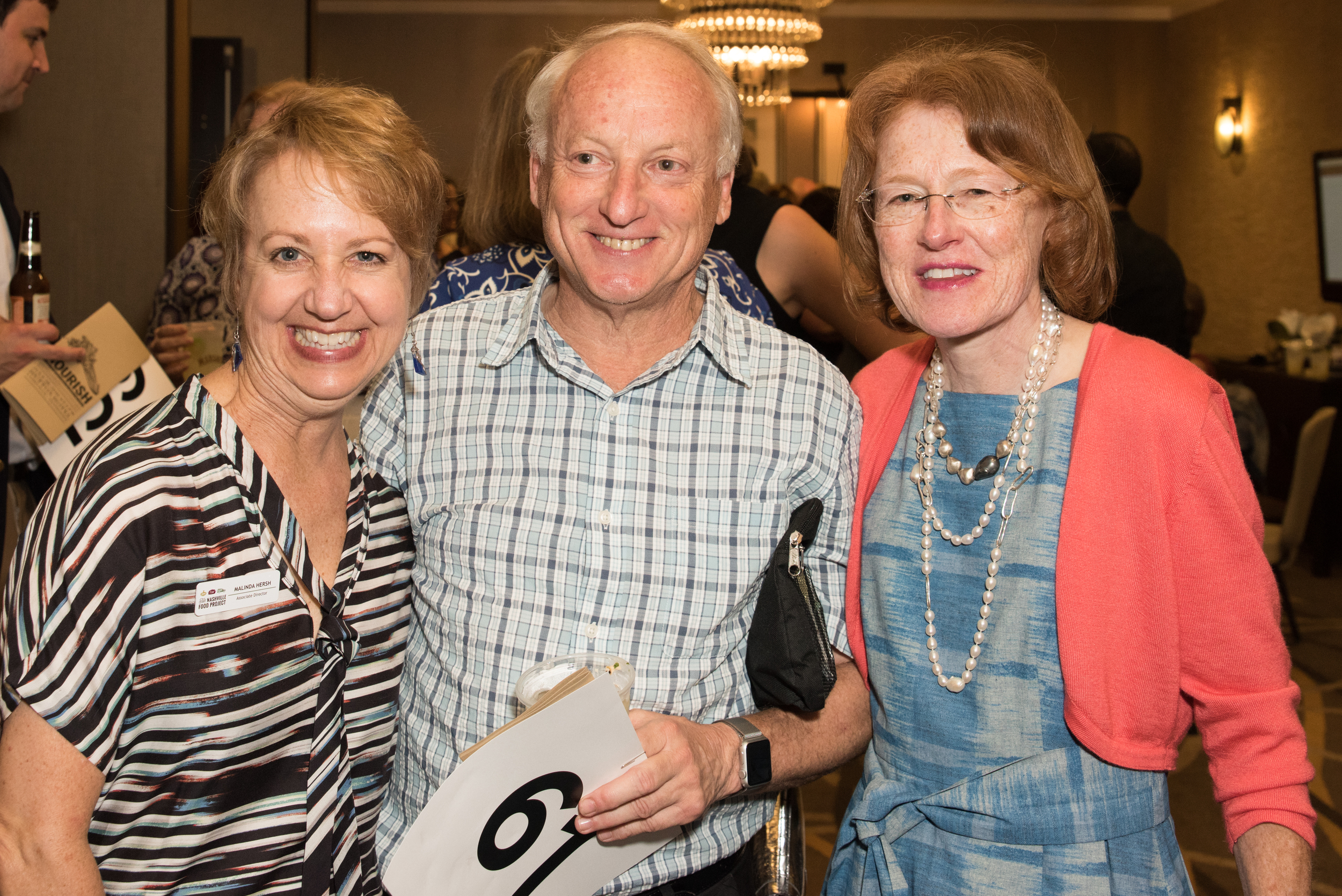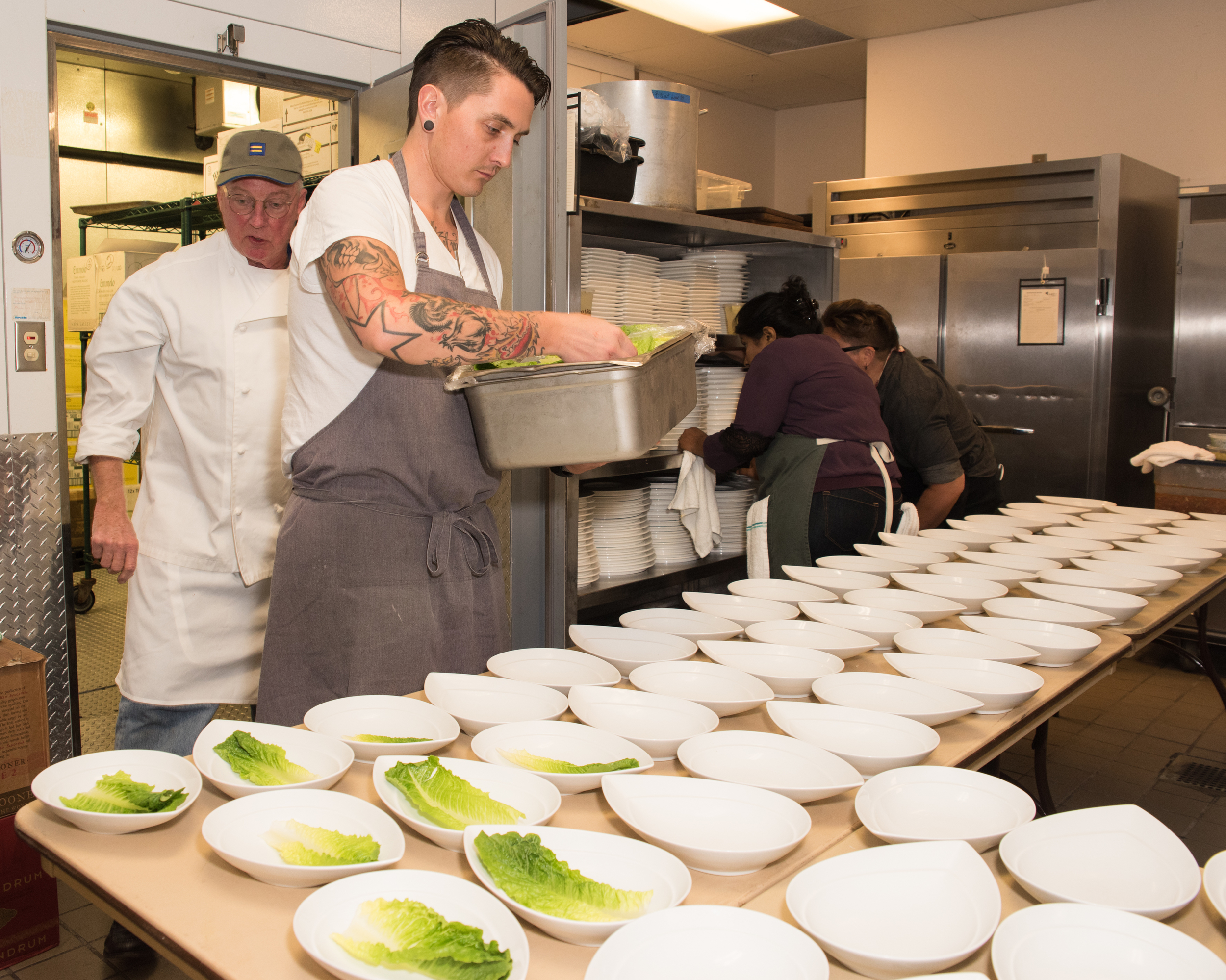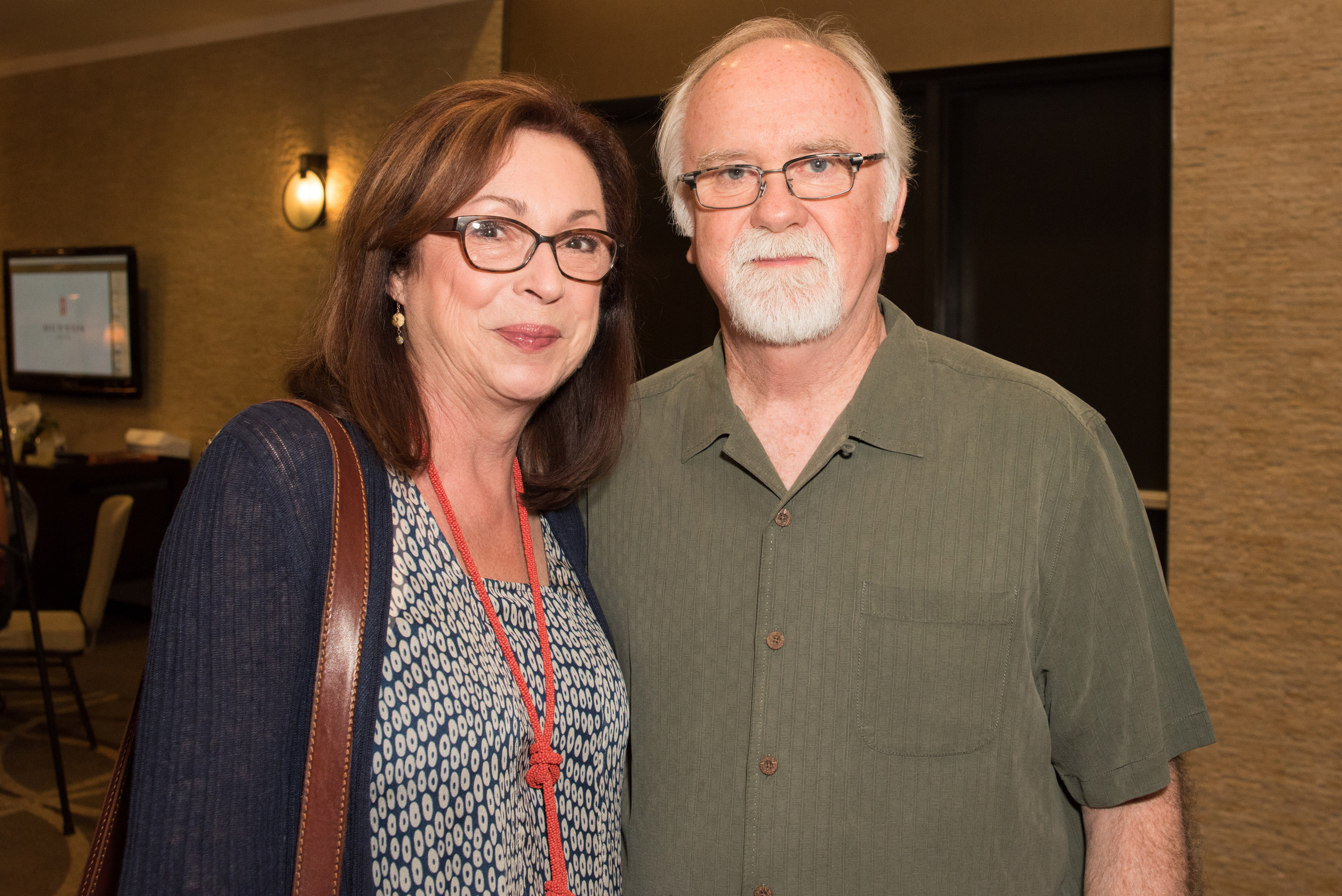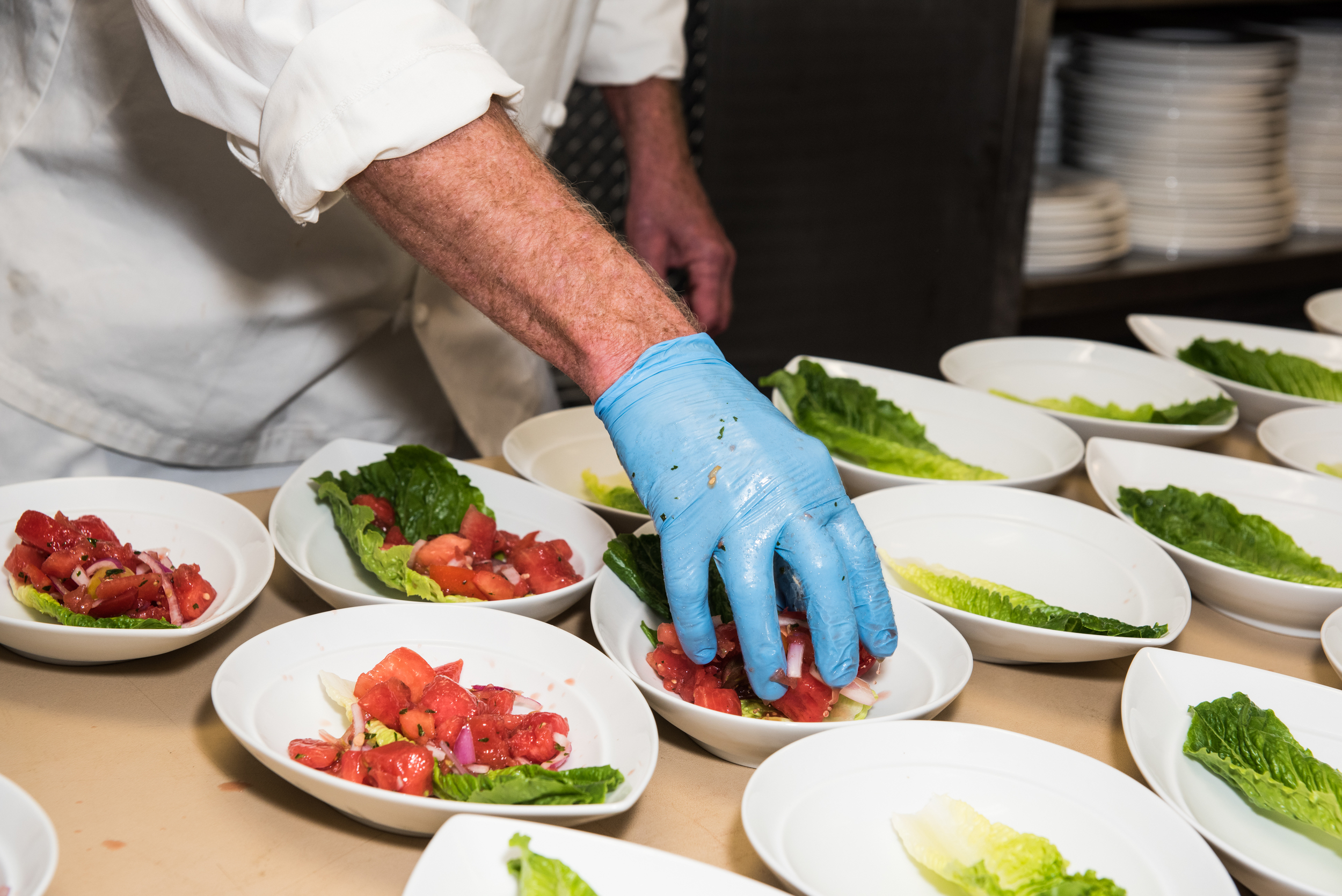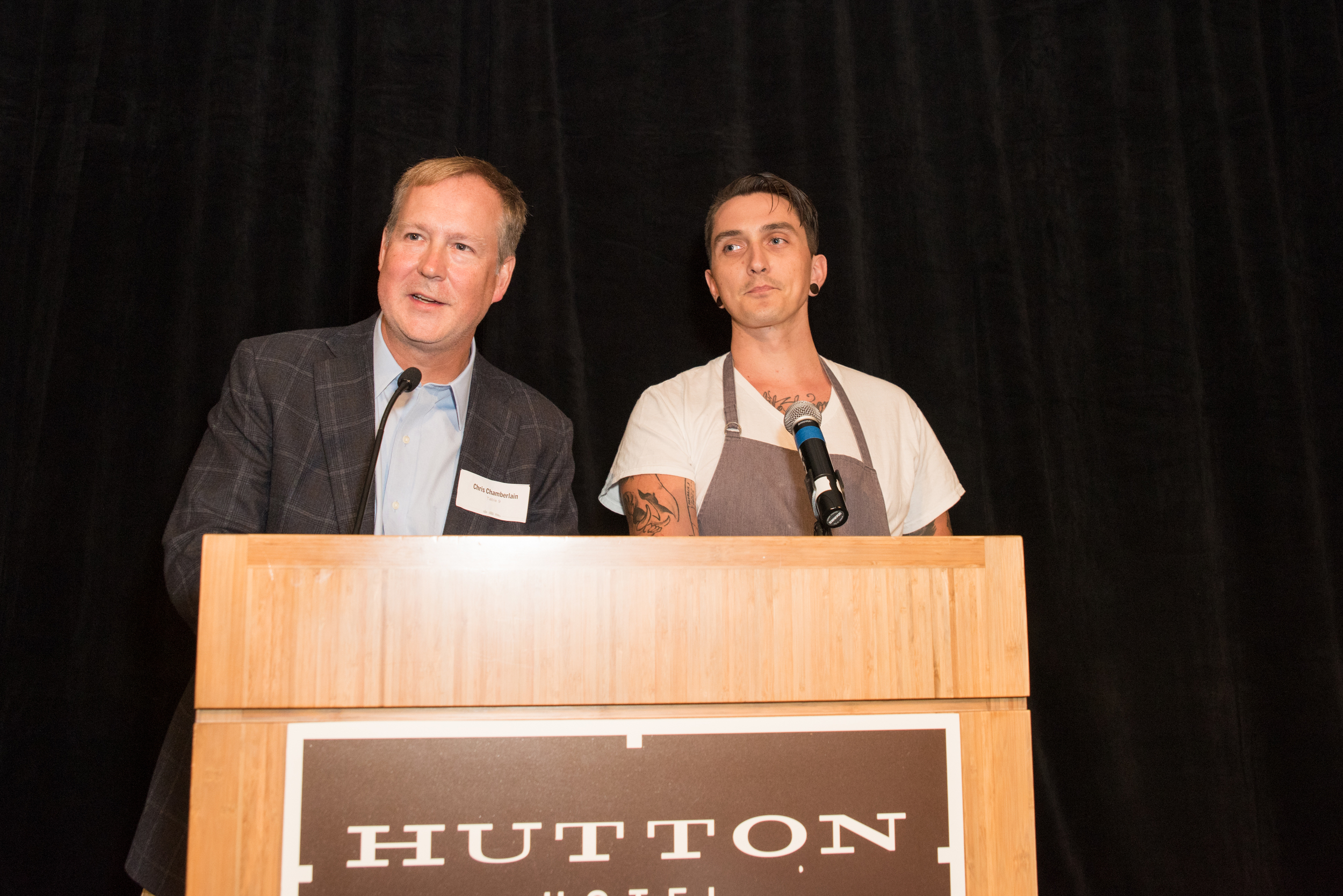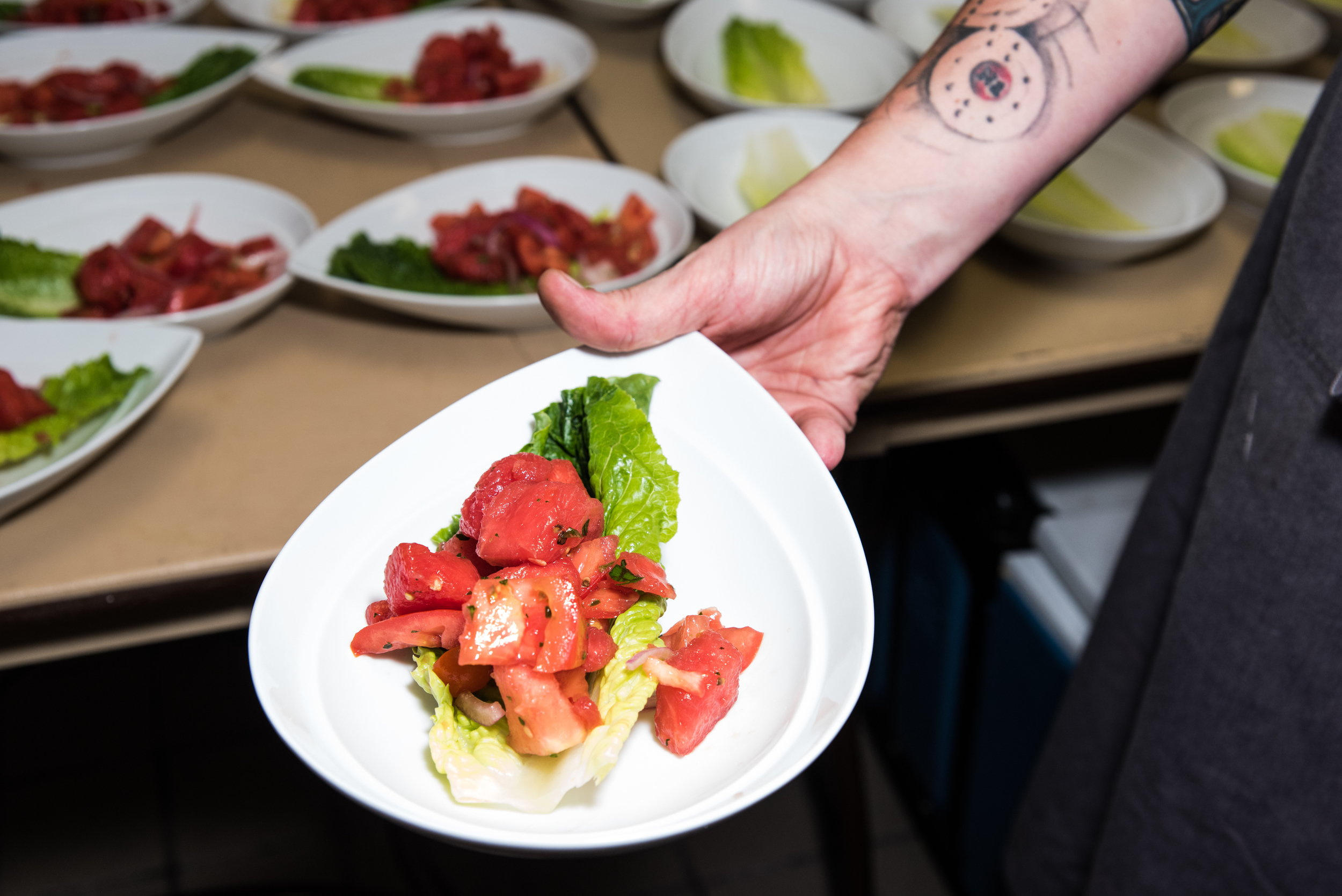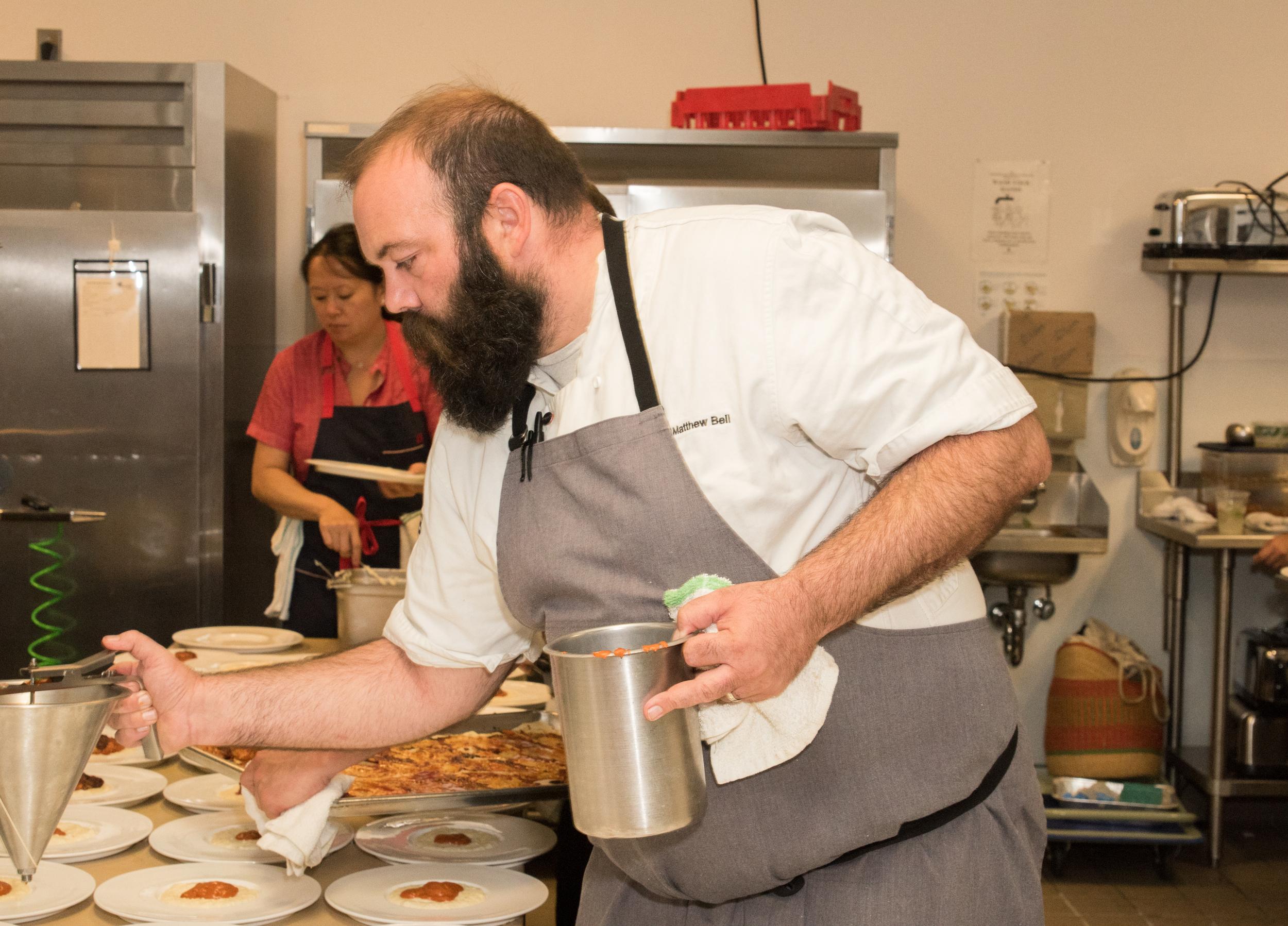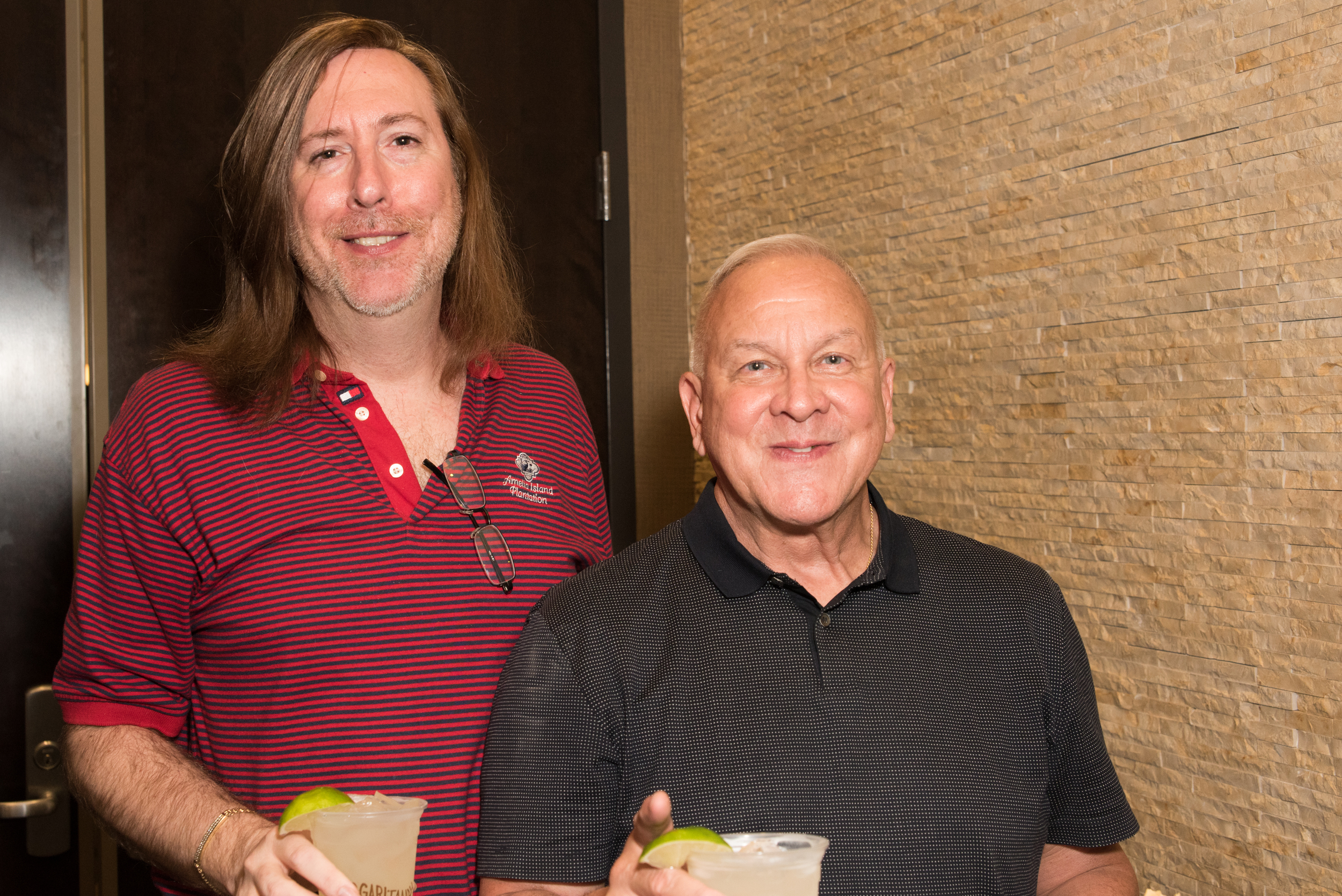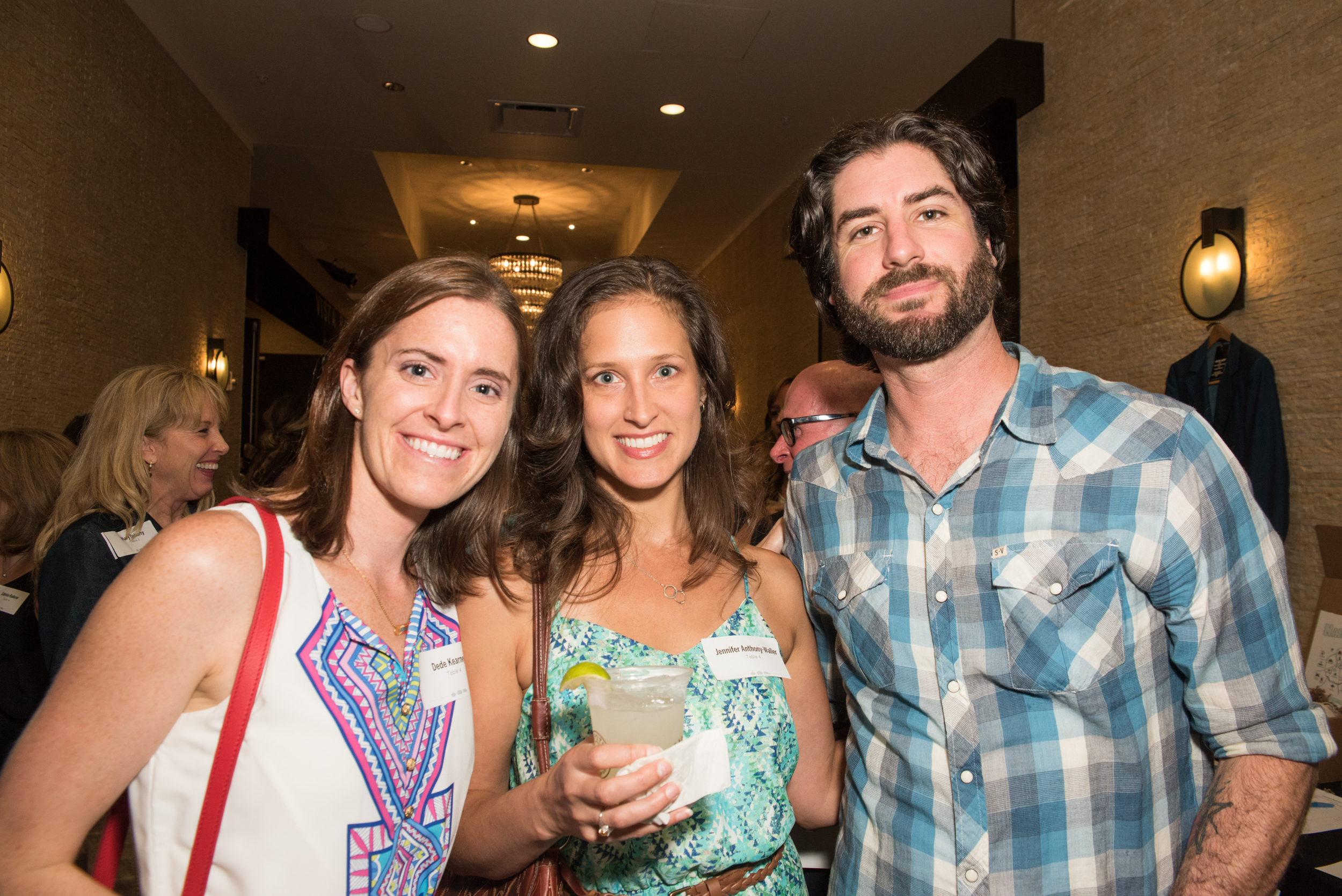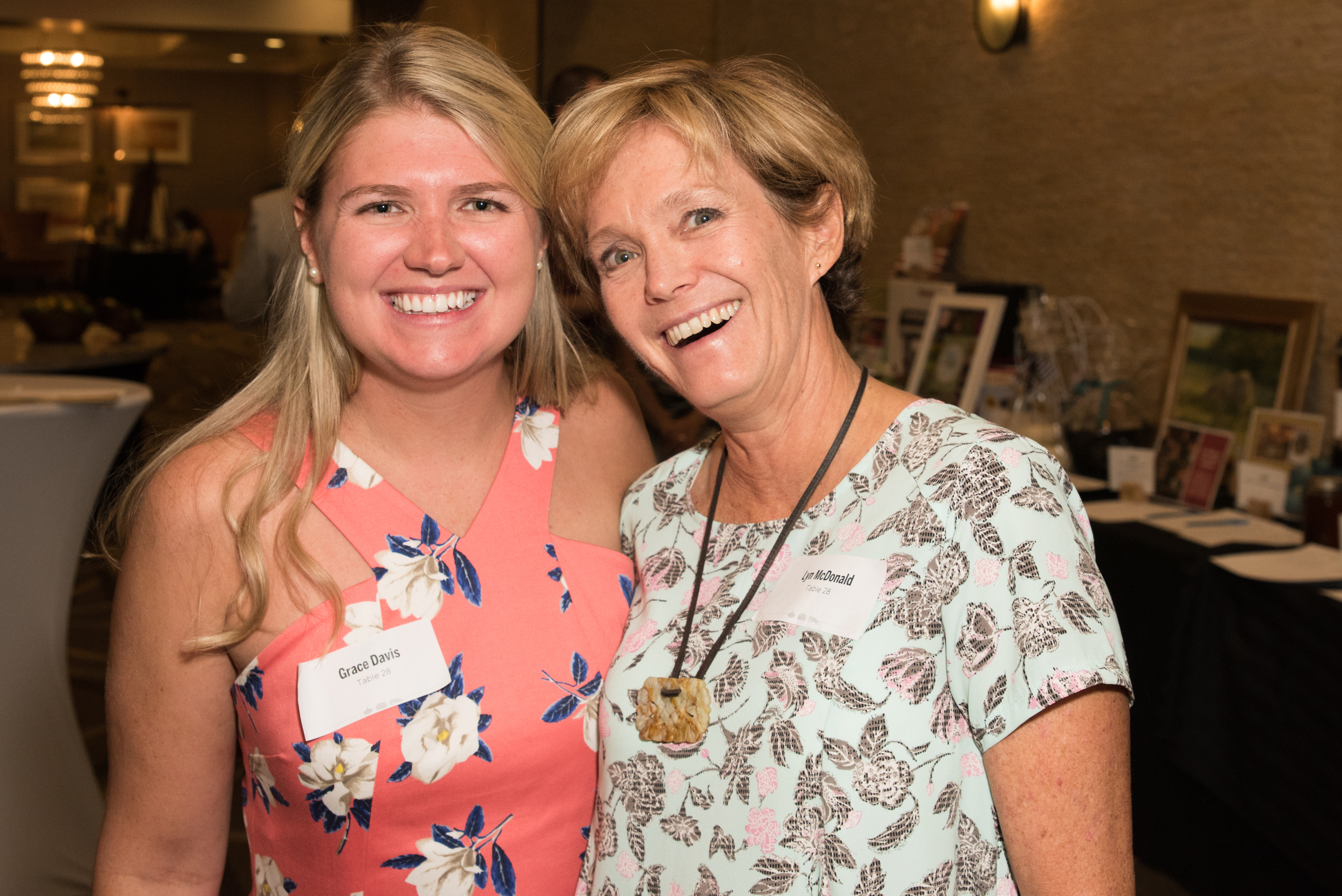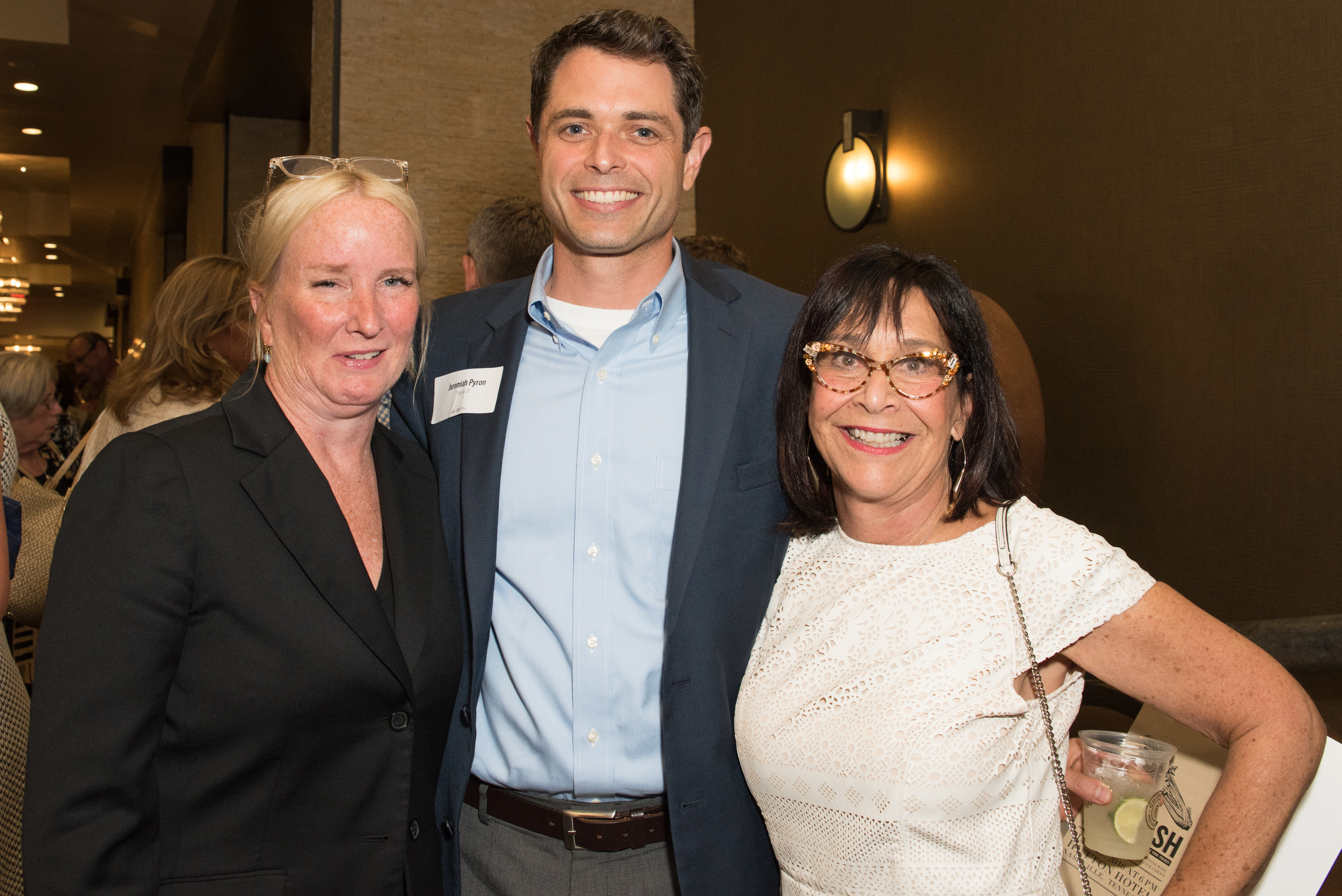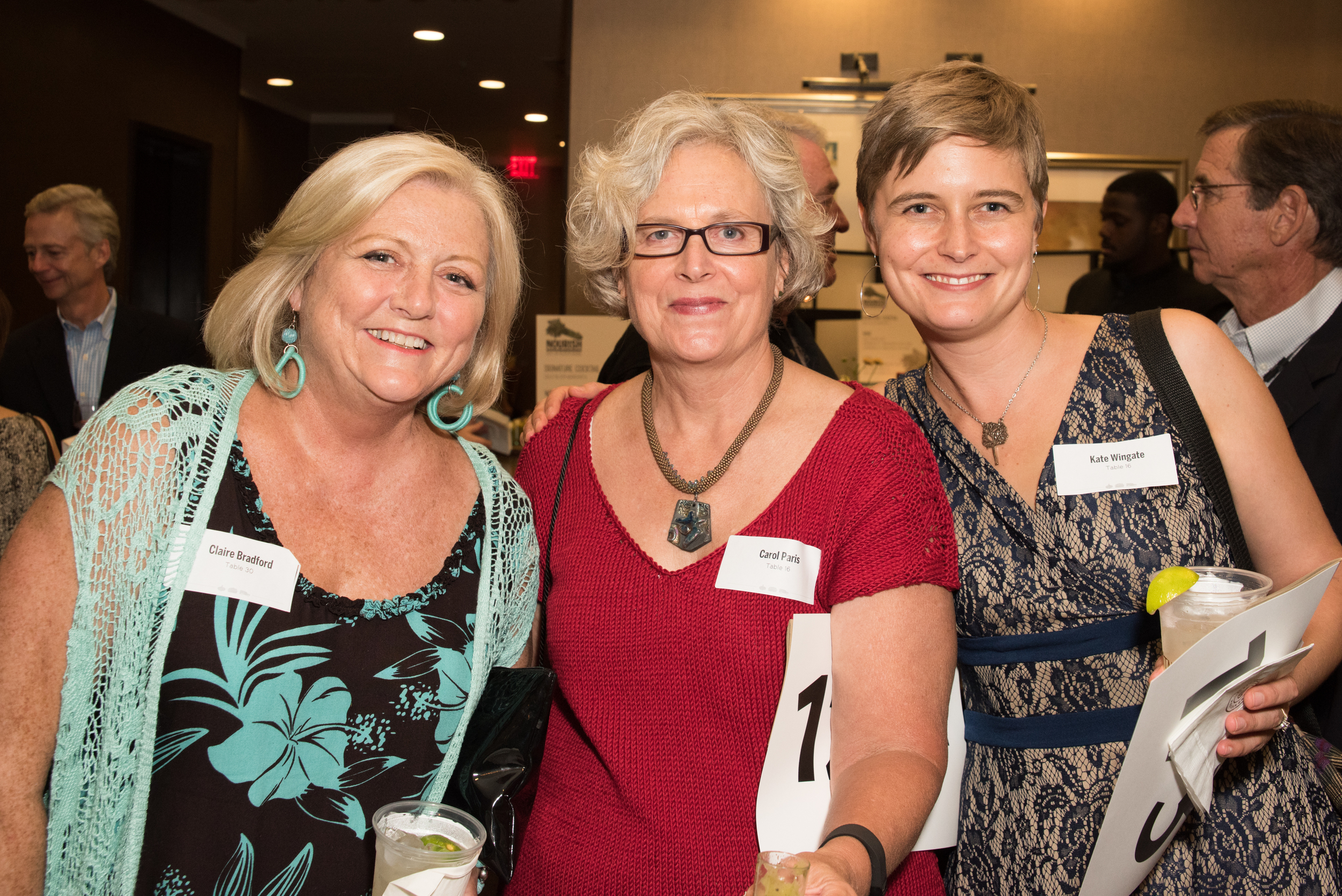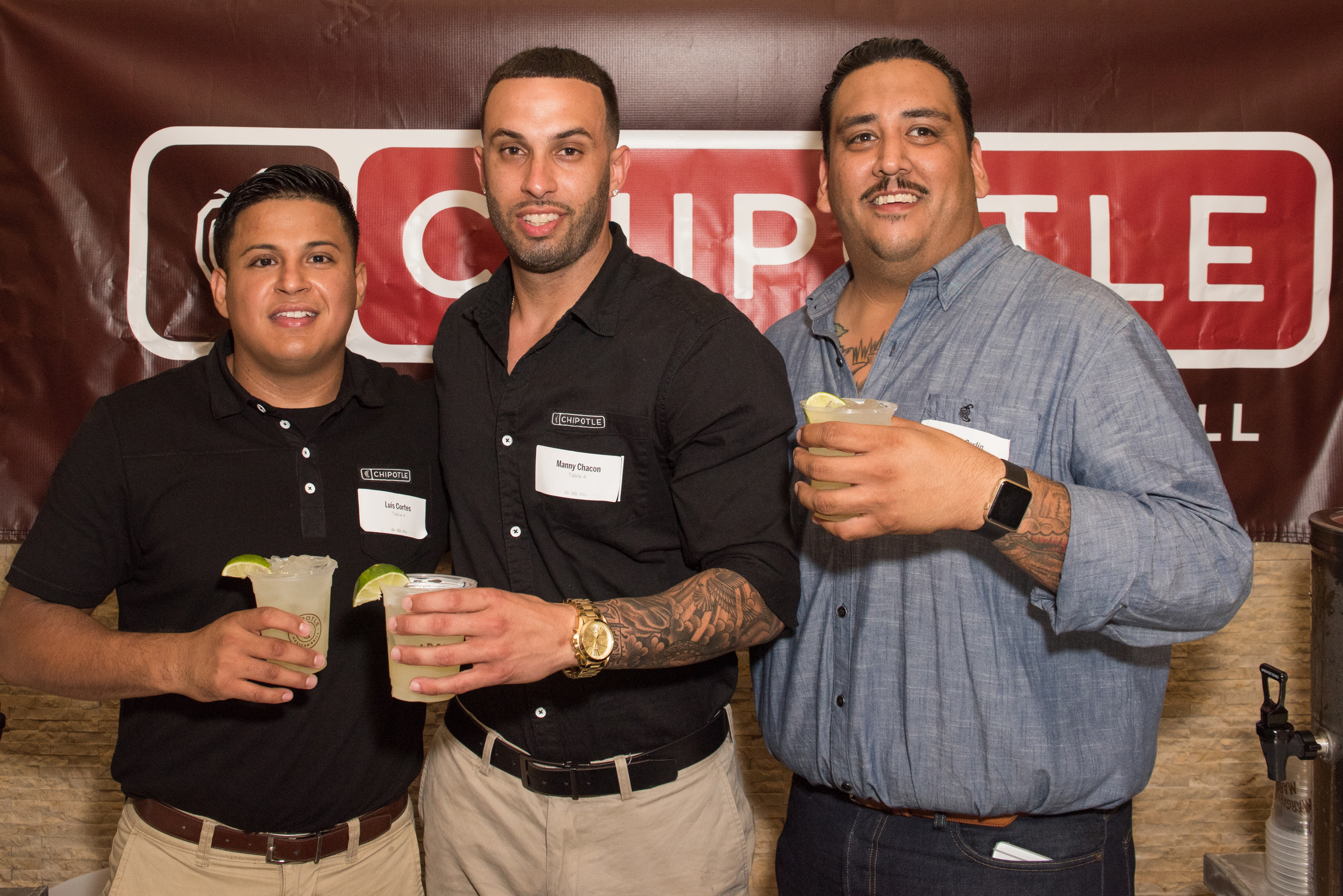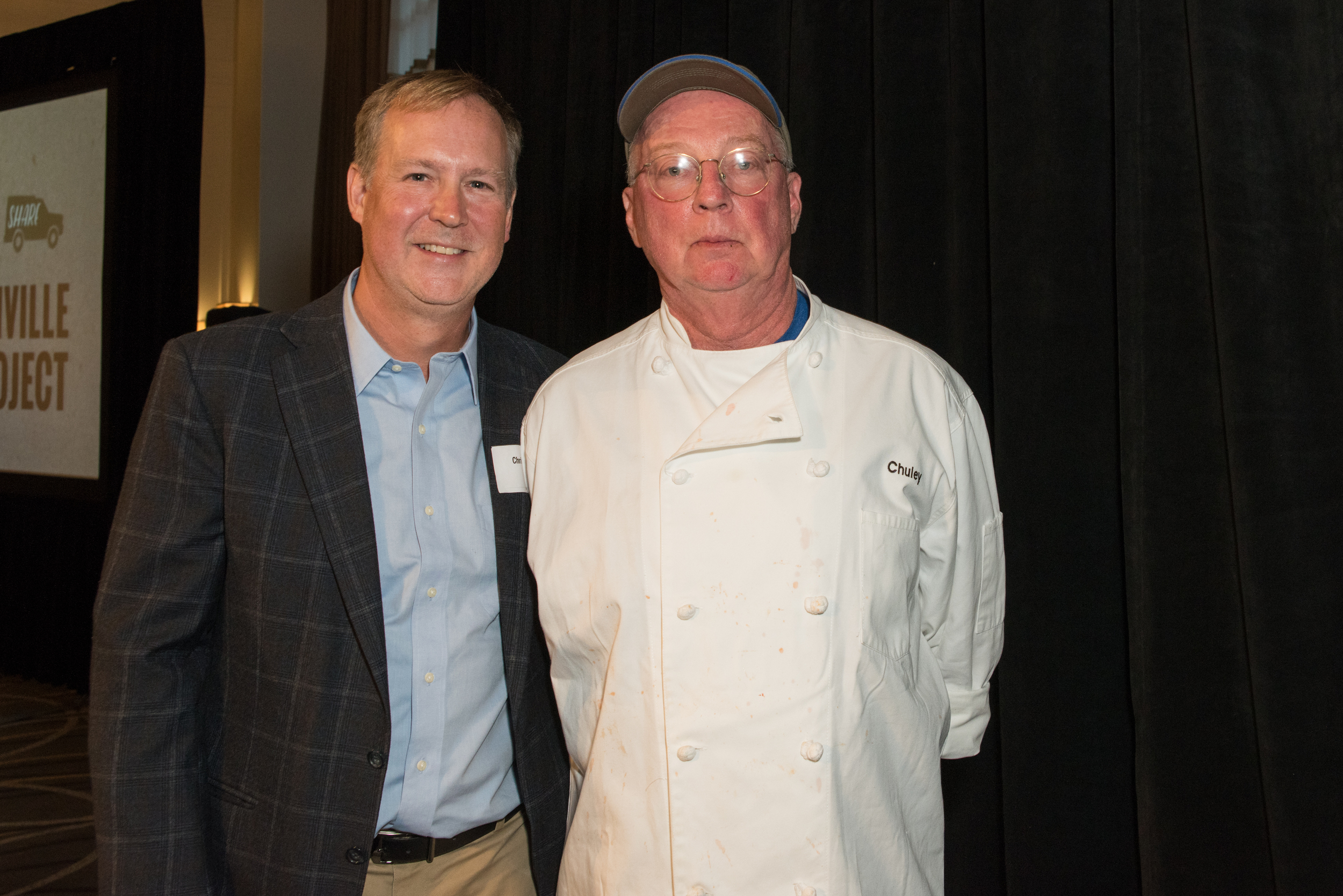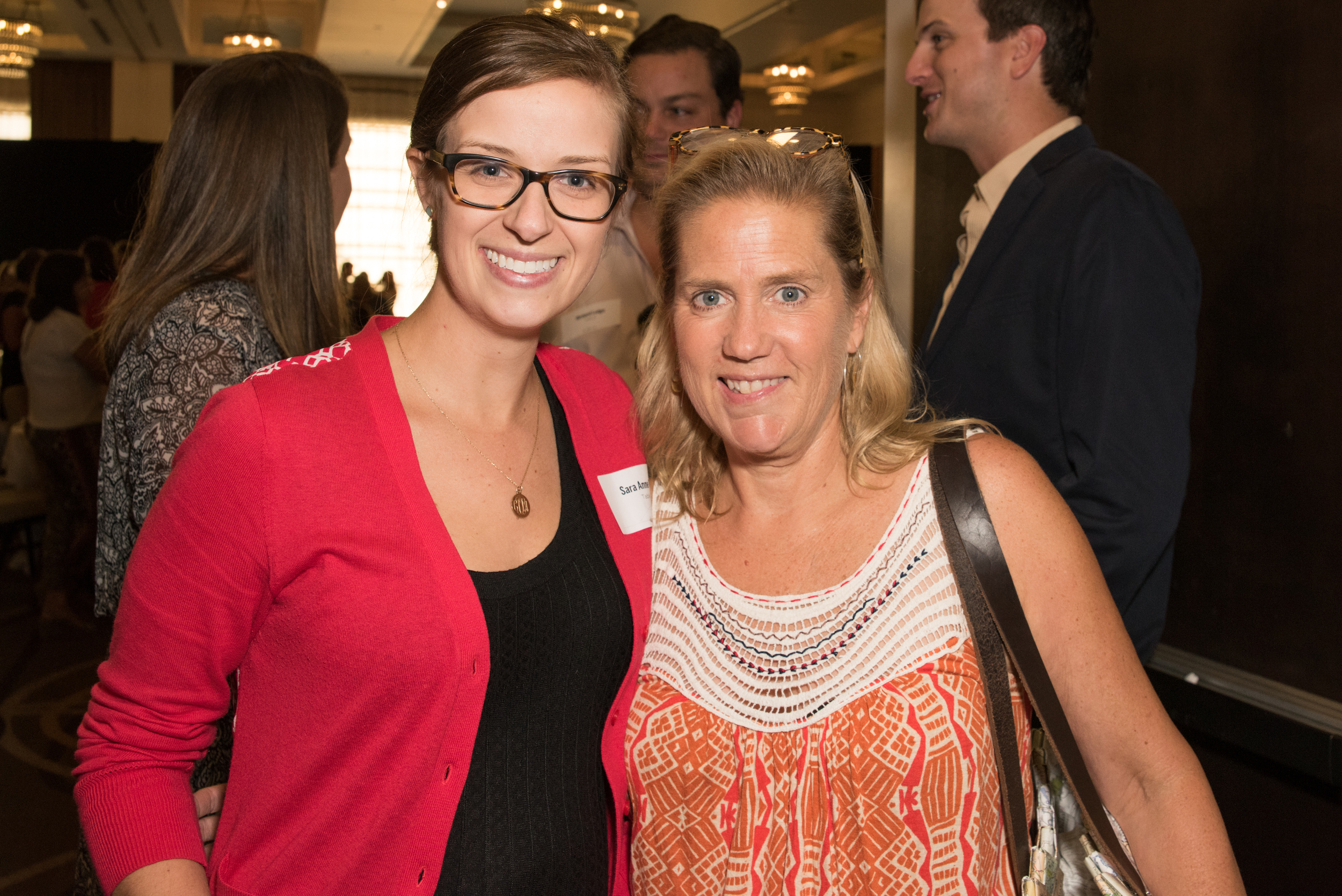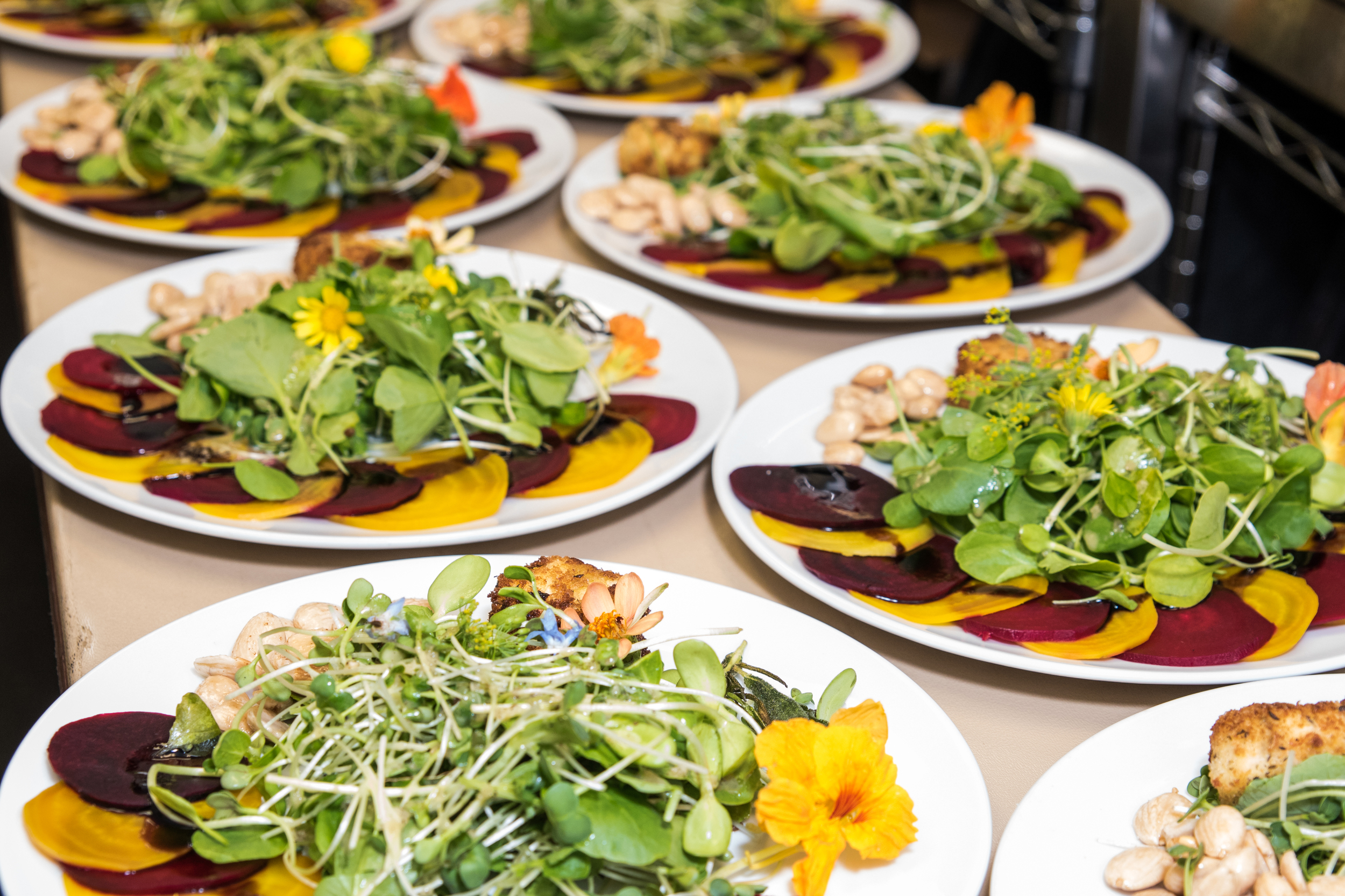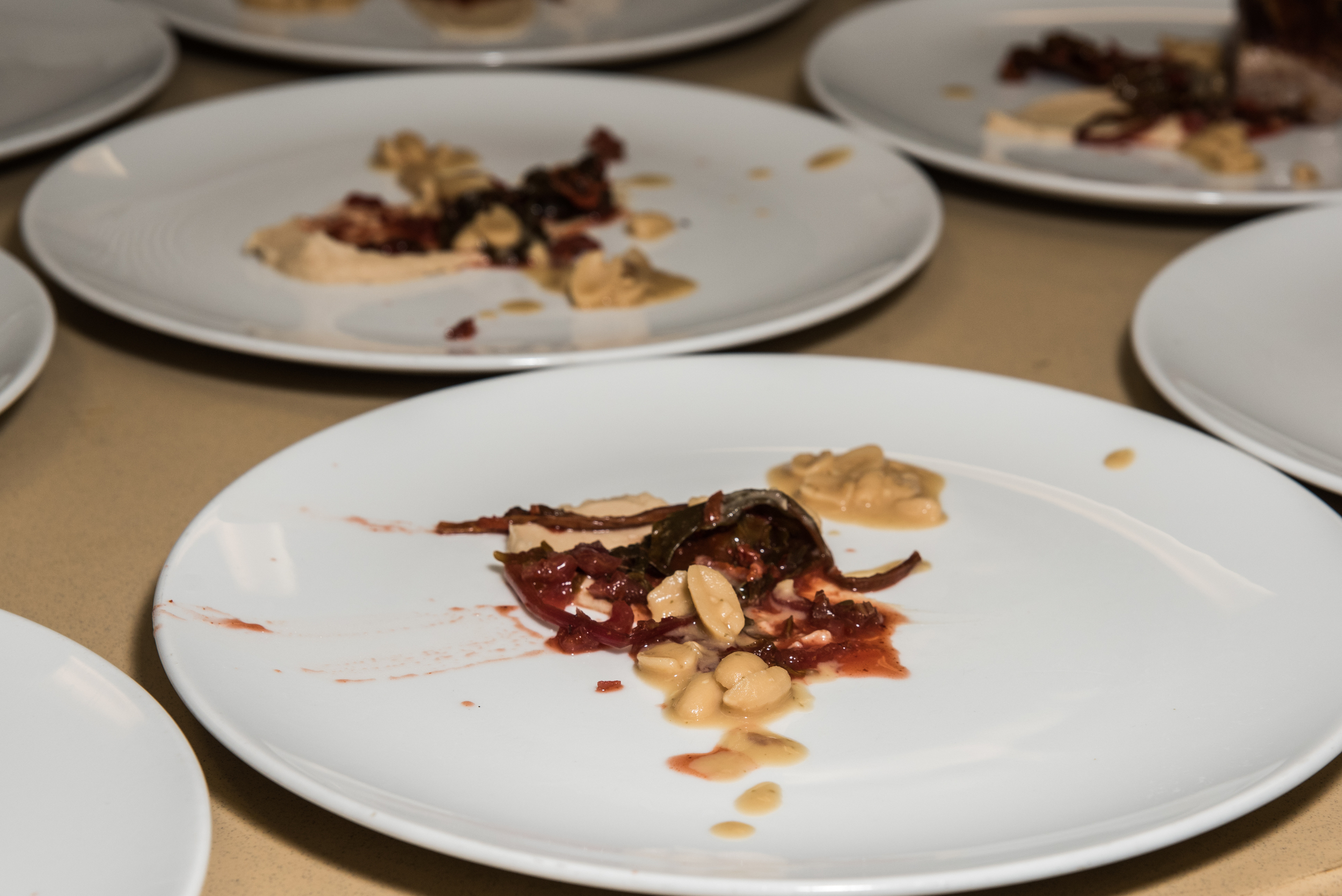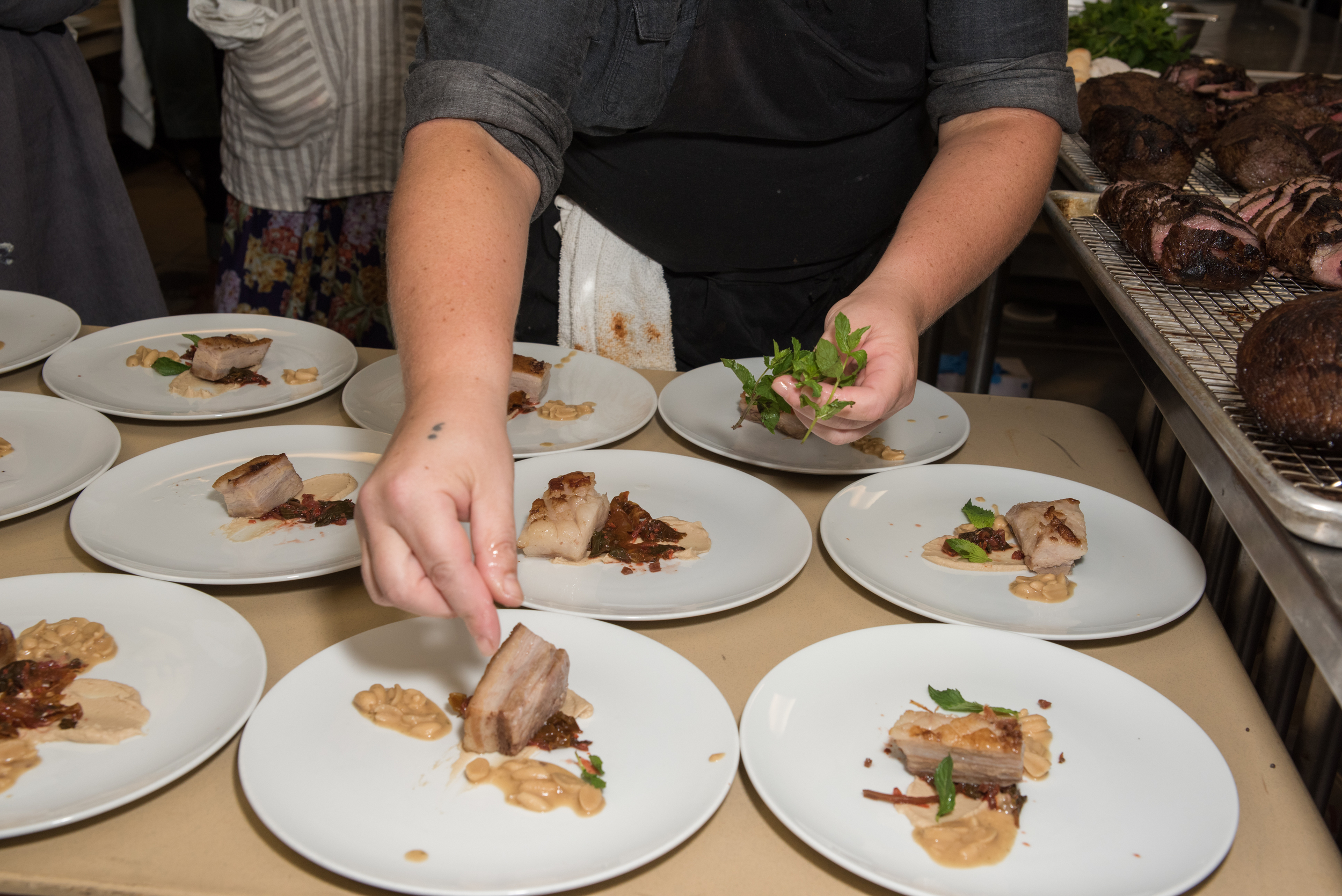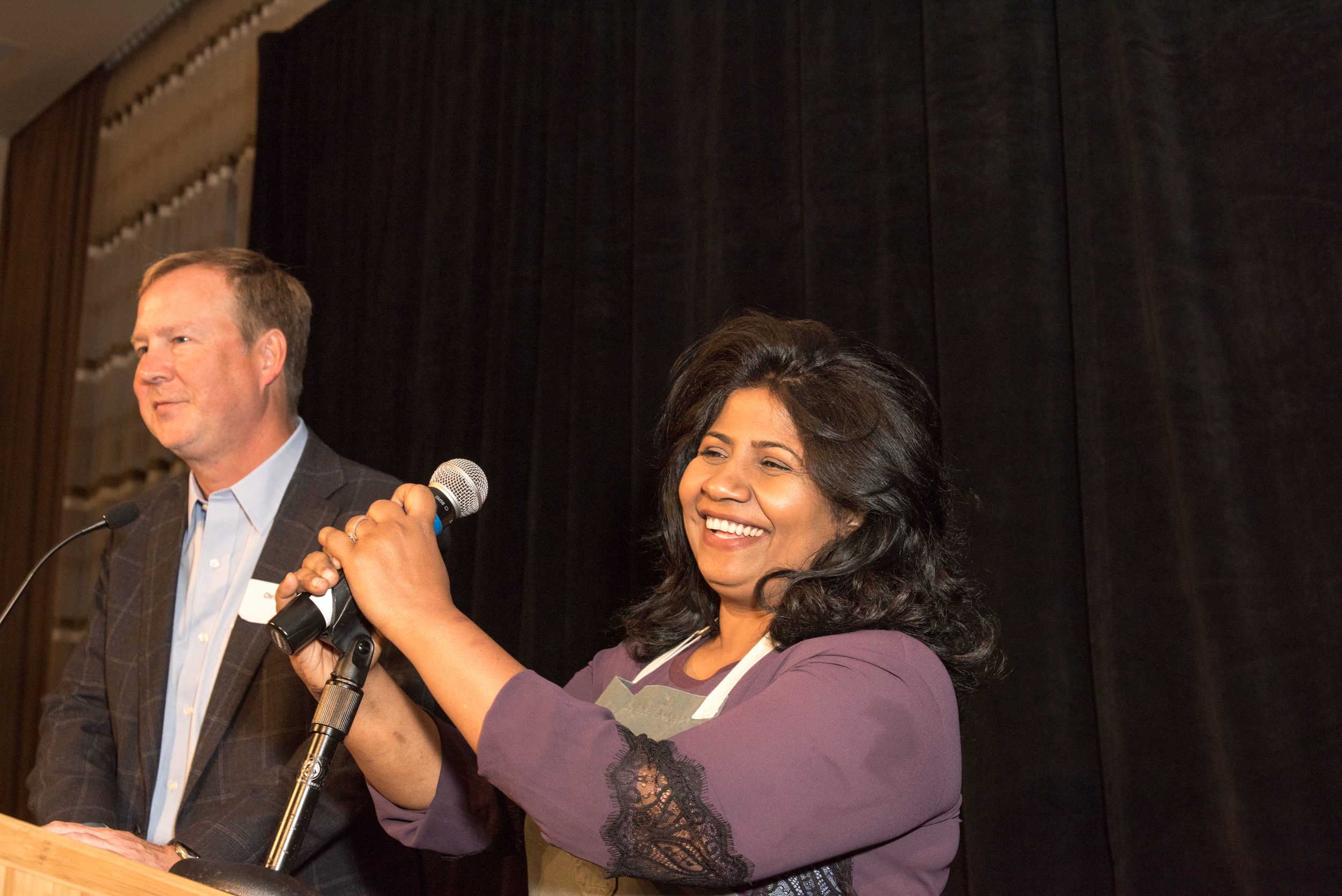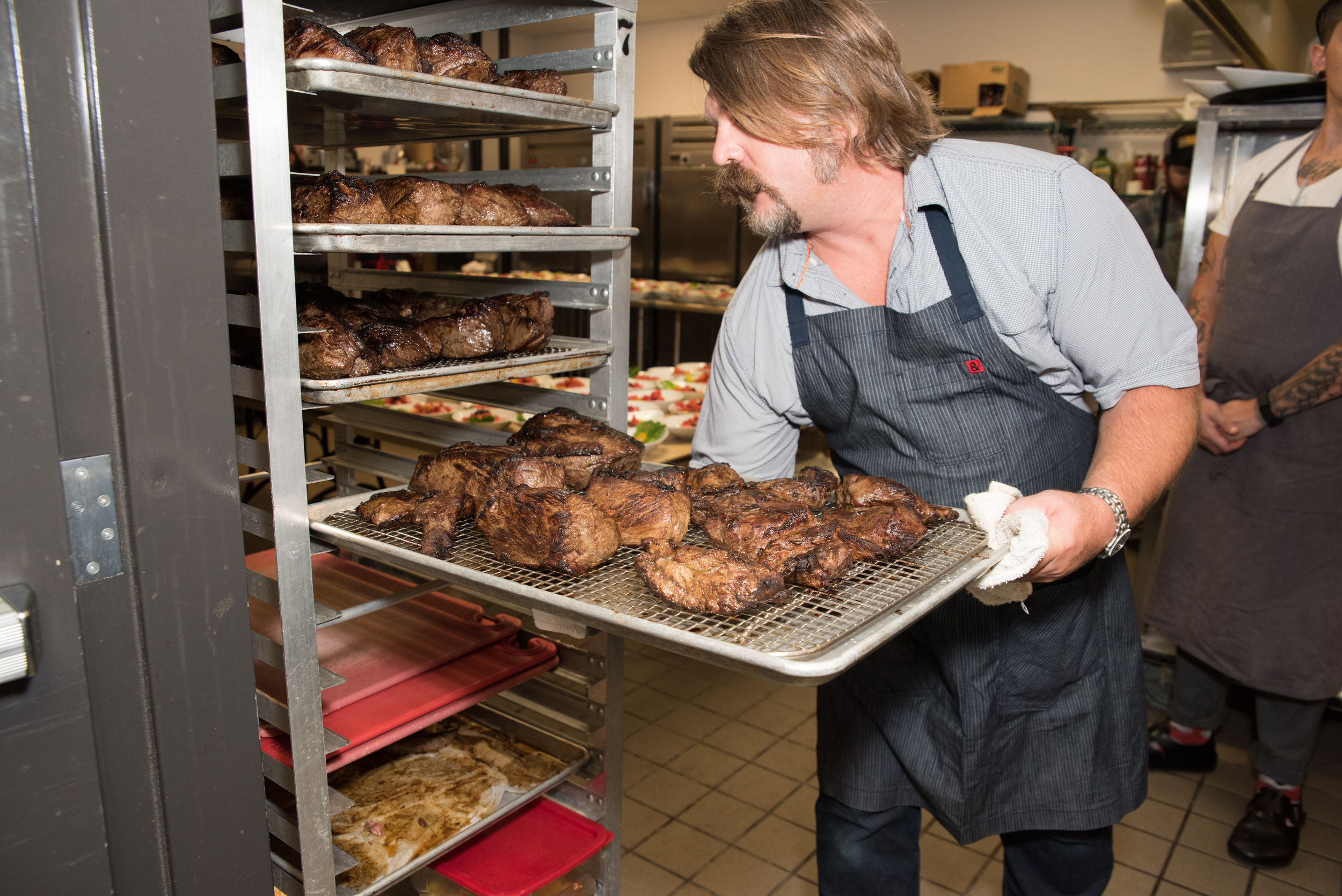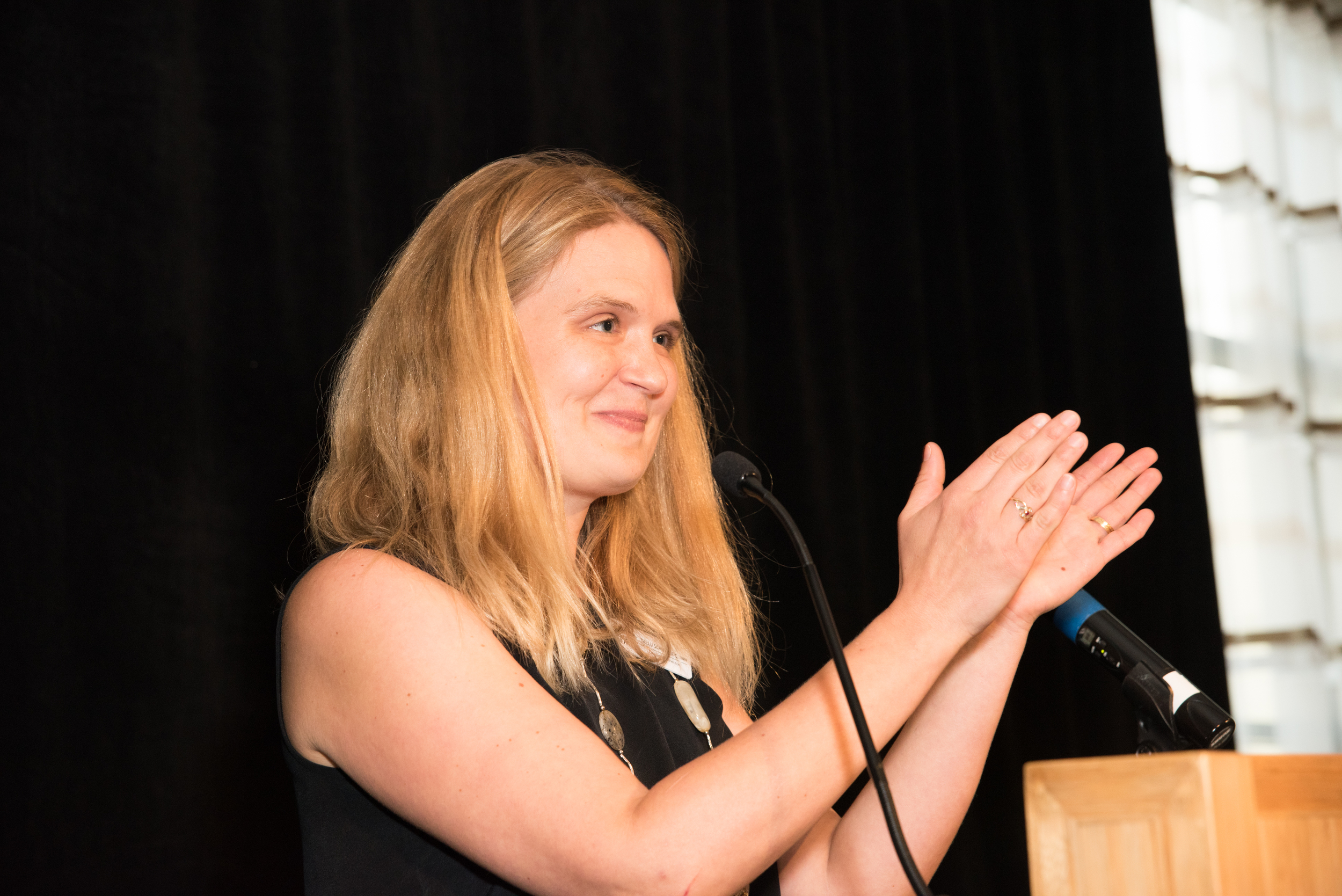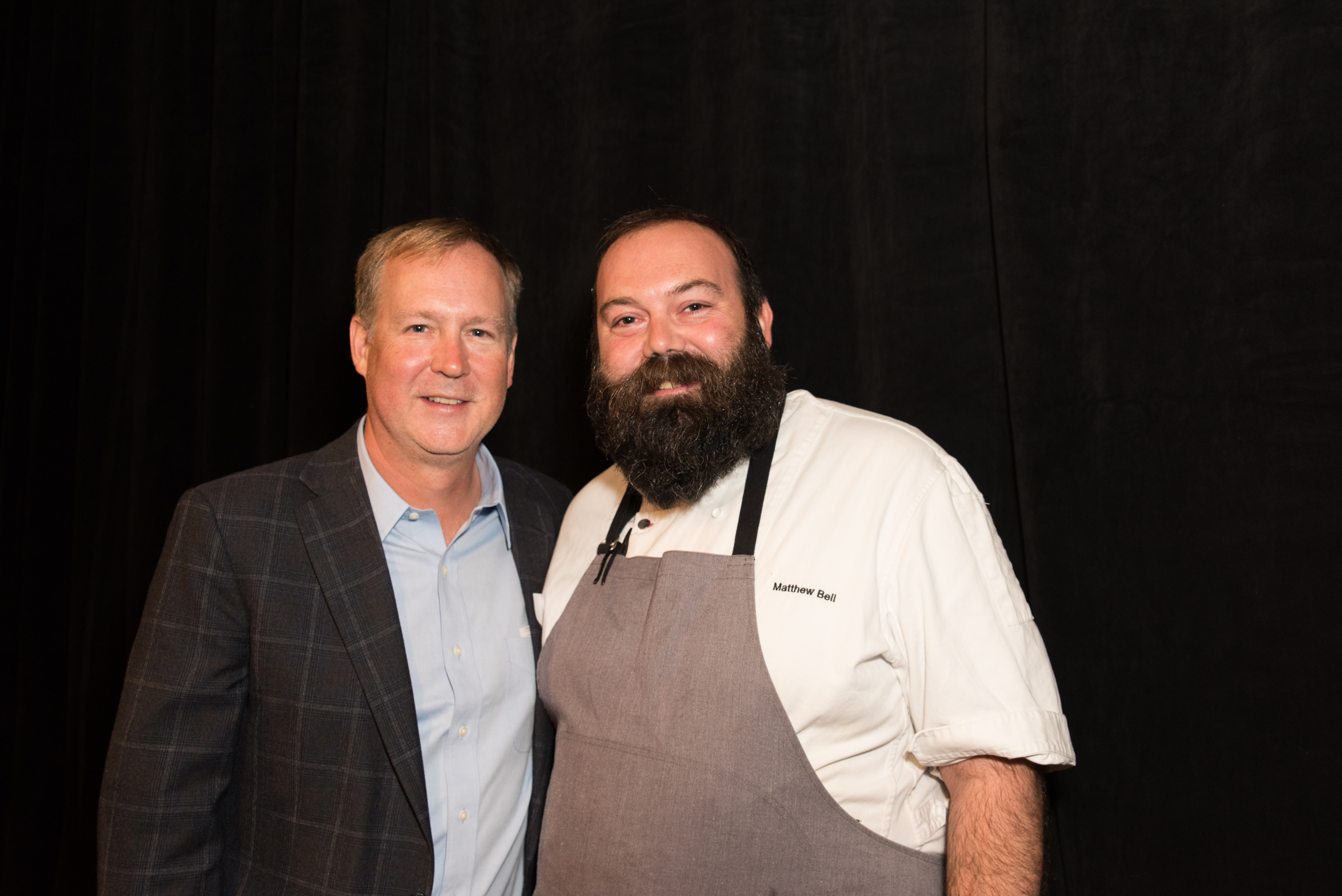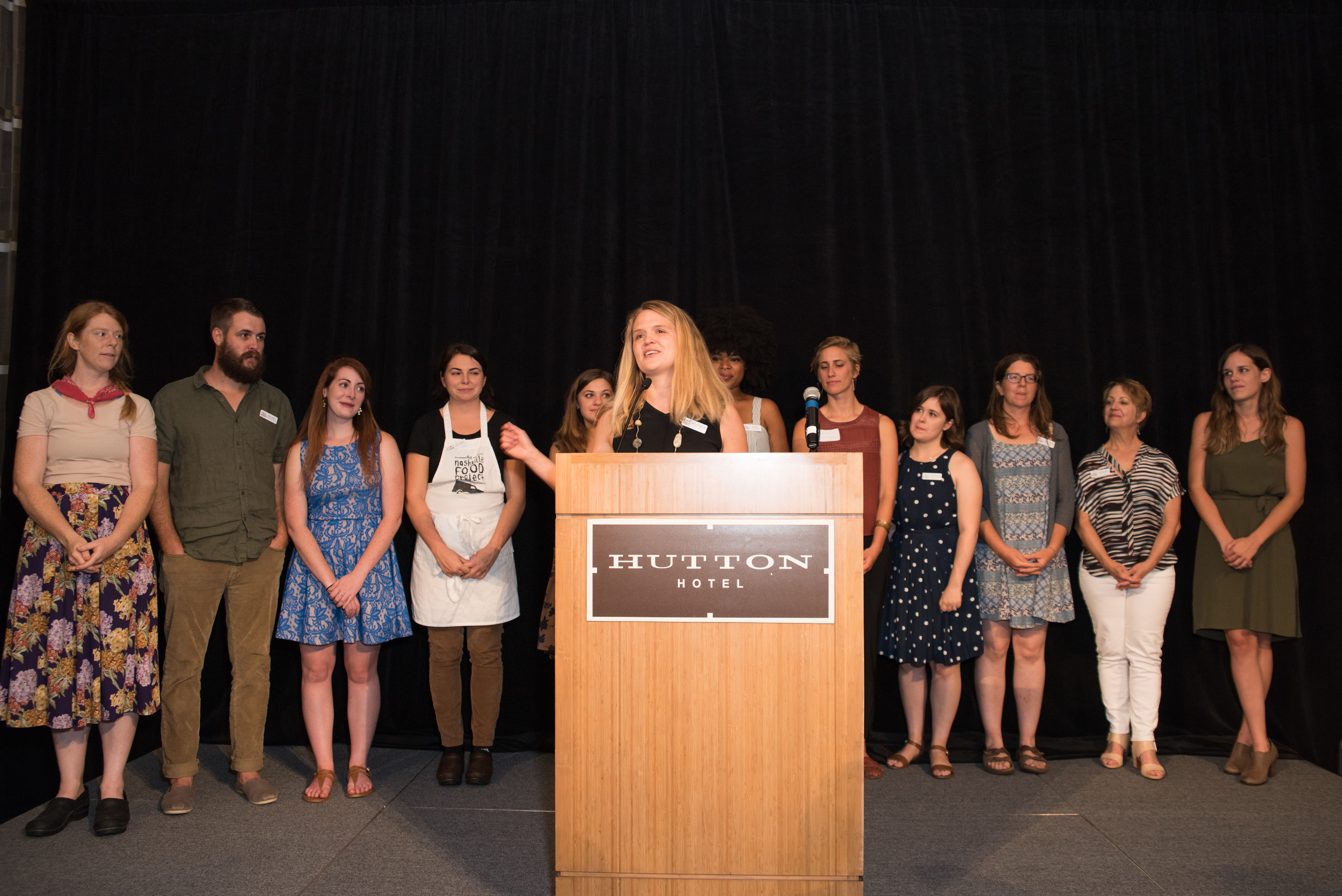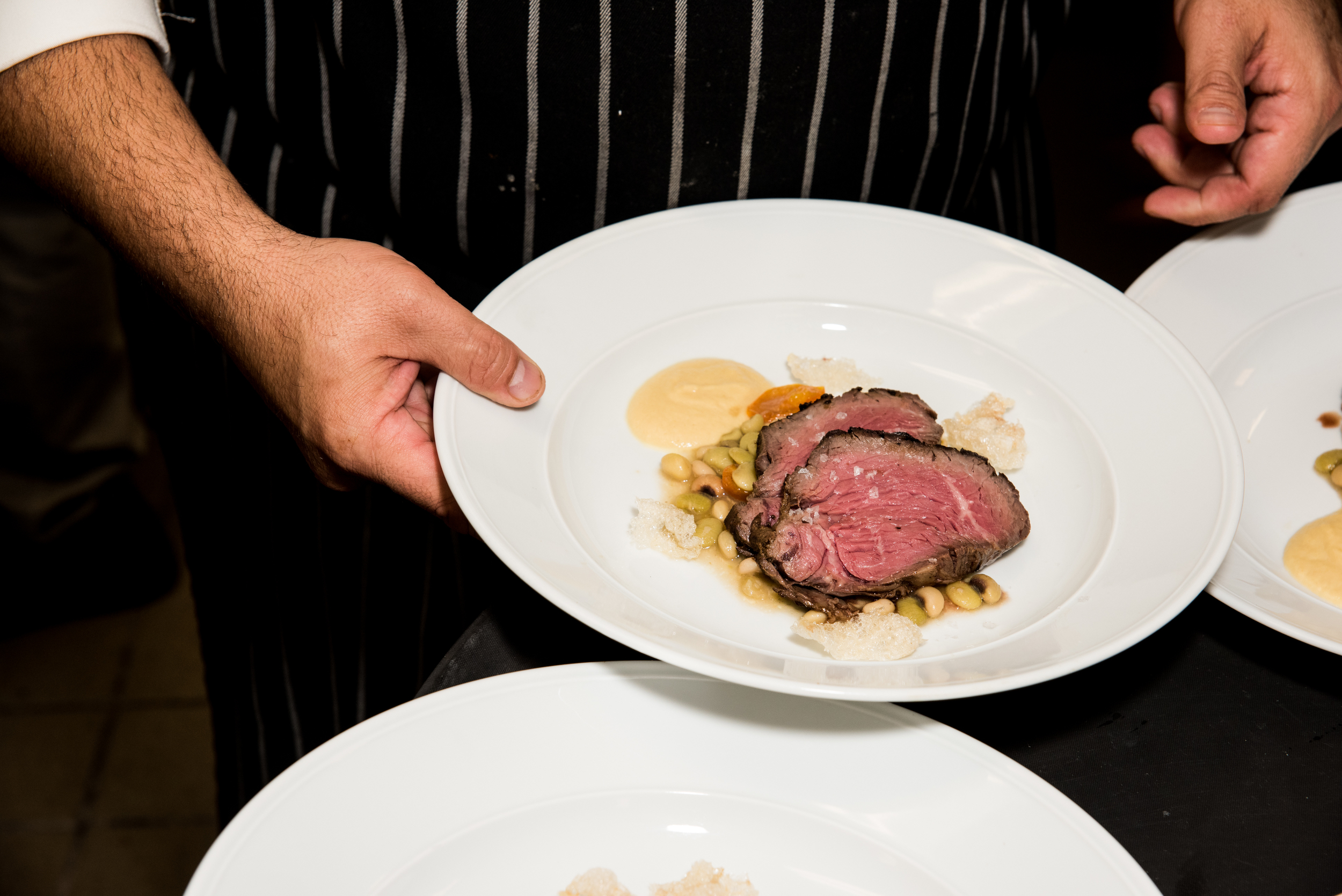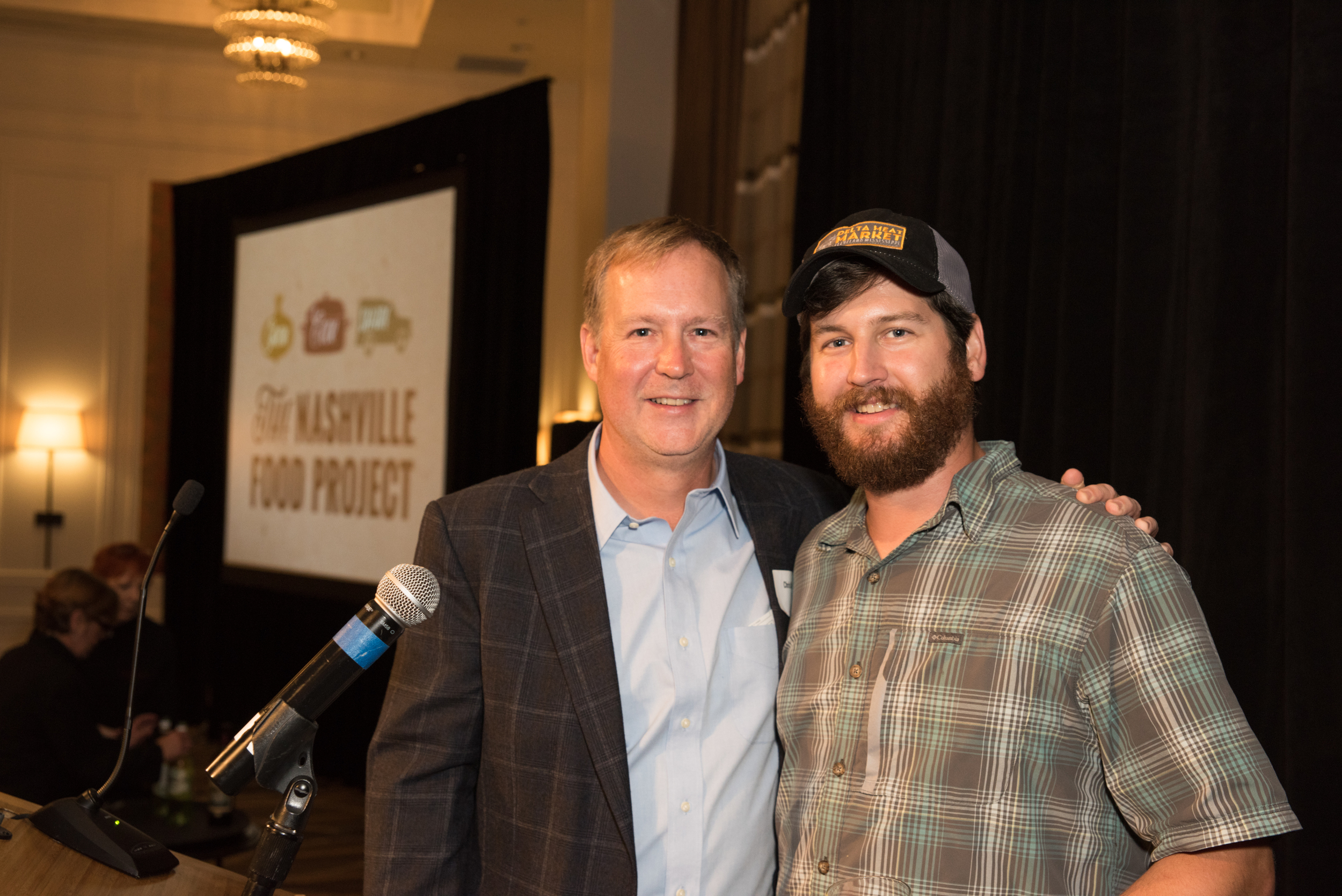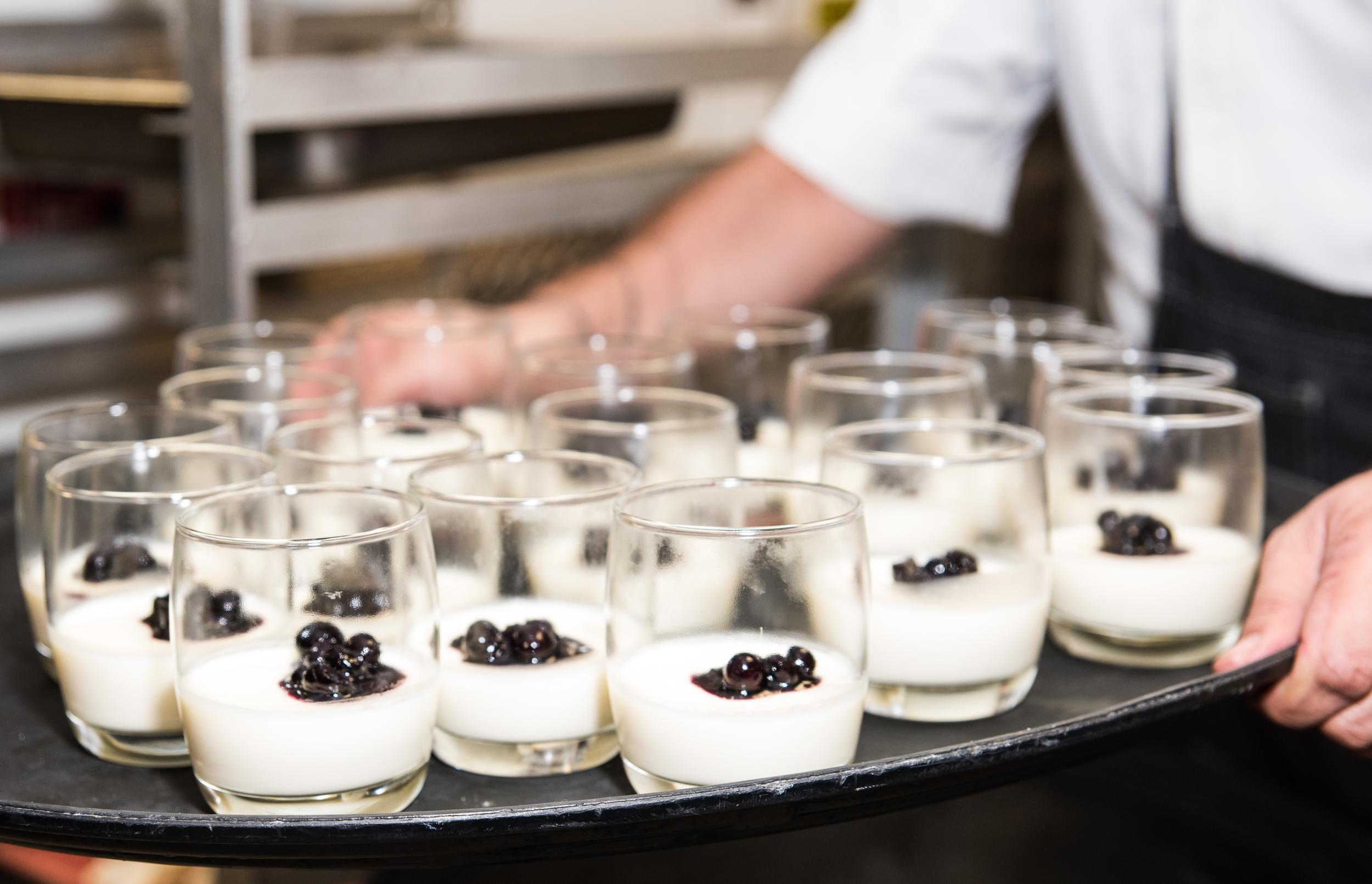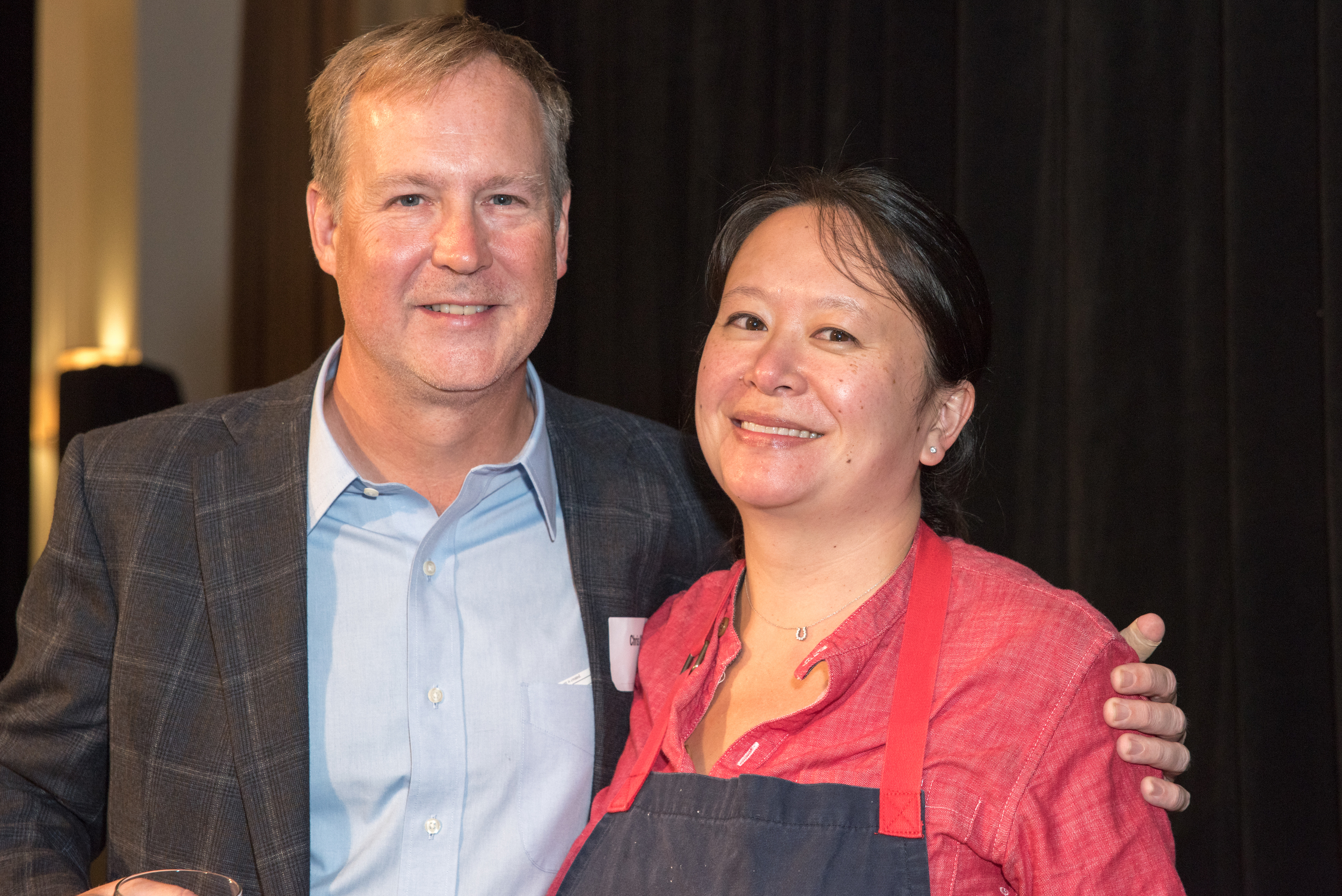Earlier this year, a kind and generous member of our community reached out to us with an unexpected, creative idea. Joe Hodgson had learned about the work we are doing to cultivate community and alleviate hunger in Nashville and wanted to get involved.
Partnering With Our Farmer Friends
Celebrating the Summer Harvest
Guest Chef Series: Hal Holden-Bache and Jaime Miller of Lockeland Table
Chef Hal Holden-Bache of Lockeland Table has been cooking with love in his heart since at least age 8. That’s when he began giving his “hard-working mother some time off,” he says. “I enjoyed cooking more than I did my homework. She allowed me to do that.”
Small Changes with BIG Impact
Nourish Nashville
Nourish 2016 did not disappoint! In its fifth year, the event raised more than $135,000 in support of The Nashville Food Project’s mission to grow, cook and share nourishing food.
This year’s event, held on July 28th at the Hutton Hotel, brought together 275 friends of The Nashville Food Project to celebrate recent accomplishments and enjoy an exquisite meal prepared by six of the Southeast’s most notable chefs.
The evening kicked off with margaritas prepared by Chipotle Mexican Grill, served alongside several delicious Mexican-inspired hors d’ouevres from Chef Nick Hertel of Merchants. Attendees ate and mingled while perusing the silent auction, which featured nearly 80 packages thanks to the generosity of our Nashville community.
Guests then gathered at the table to enjoy a five-course meal paired with wines from Lipman Brothers. Local food writer and friend of the Food Project Chris Chamberlain elicited many laughs from the stage as emcee of this year's event. The dinner included watermelon salad by Chef Bill Smith of Chapel Hill’s Crook’s Corner, curried catfish and grits by Chef Asha Gomez of Atlanta’s Spice to Table, Bear Creek Farms pork belly by Chef Matt Bell of Little Rock’s South on Main, and beef by Chef Cole Ellis of Cleveland, MS’s Delta Meat Market. After a rousing live auction, guests enjoyed a blueberry posset by Butcher & Bee’s Cynthia Wong as well as take-home cookies from Christie Cookie Co. on their way out.
Huge thanks to all in attendance at Nourish this year. A special thanks to our sponsors for making this year’s Nourish possible: First Tennessee Foundation, Chipotle Mexican Grill, BlueCross BlueShield of Tennessee Community Trust, Dorothy Cate and Thomas F. Frist Foundation and Whole Foods Market. We also want to thank our patrons, live and silent auction donors and in-kind sponsors for supporting this annual fundraising event. We are grateful to you for believing in and supporting the important work of The Nashville Food Project. Click through the photos below to see the night's highlights.
Achaar - A Taste of Asia
Celebrating Interdependence on Independence Day
It’s not every day that you get a request from a volunteer group for ideas for “something big” to partner on, but that’s just what happened with local restaurant group Strategic Hospitality.
Growing Safe Spaces for Community
Nutrition Education - Strengthening our Relationships with Food & Each Other
by Kathleen Costello, AmeriCorps VISTA Nutrition Education Coordinator
Hello all! I joined The Nashville Food Project's staff earlier this year as a member of Americorps’ Anti-Hunger and Opportunity Corps (AHOC). AHOC places Americorps members at different organizations throughout the county that are committed to reducing hunger in their local community.
My role at The Nashville Food Project involves creating nutrition education opportunities for several of TNFP’s community partners. These activities include inviting students to our kitchen to make healthy snacks, teaching hands-on cooking classes at summer camps, and leading food demonstrations with some of our community partner organizations.
I just finished providing hands-on cooking sessions at the PENCIL Foundation’s summer camp. This two-week camp taught students about environmental issues such as pollution and water conservation through fun activities, speakers, and field trips. The Nashville Food Project provided lunch twice a week, and I got to lead the kids in cooking classes that had an environmental component. For one of our sessions, we made local “berry scones” with raspberries picked from our Wedgewood Urban Gardens. Besides being insanely delicious (I ate three) it gave students the opportunity to see how many miles non-local food travels compared to locally grown food. Just purchasing two local ingredients for this recipe—cream and raspberries—saved over 4,000 miles of food travel!
Another nutrition class underway is at Nashville CARES, an organization that provides resources and support to people diagnosed with or at risk of contracting HIV. Every other Wednesday, I bring a hot, made-from-scratch lunch made by our volunteers, and I give a cooking demonstration for one of the meal components. I remember being so nervous for my first class…how would these strong individuals who are dealing with a serious immune disease going to react to this fidgety 20-something intern encouraging them to eat more vegetables? I was taught that the most important part of teaching is connecting with your students… but how could I connect with an audience so seemingly-different from me?
It turns out the answer was pasta salad. I asked about their favorite foods, and Margaret, a fiery grandmother with glittery fingernails, told me how she loves pasta salad, but wanted to learn some new ways to make it. I shared the first pasta salad recipe I’d ever made, someone else mentioned his mother’s go-to ingredient (Italian salad dressing) and the conversation rolled on from there. This week, per Margaret’s request, I’m going to show them how to make a pesto pasta salad made from carrot tops. I guess we aren’t so different after all.
Before my experience at The Nashville Food Project, I thought the most important part of being an educator was walking into the room with all of the answers. But the more time I spend with such amazing and unique individuals, the more I realize that my job is not to provide the right answers, but to ask the right questions. It’s about understanding people and what drives the food choices they make. It’s about working together to find out what the barriers are to making healthy choices, and how we can break those down and build new, healthier relationships with food and each other.
It most likely also involves a freshly baked scone and a killer pasta salad recipe.
Sharing Food & Changing Lives With Two New Partners
Growing Together at the Nashville Farmers' Market
The Nashville Farmers Market hosted record-breaking crowds this month to kick off the warm season, and we’ve been thrilled to be a part of it as "Growing Together," the new name for the Refugee Agricultural Partnership Program, a partnership between The Nashville Food Project and the Center for Refugees and Immigrants of Tennessee.
For the first time, the farmers of Growing Together harvested produce they’ve been growing since early March to sell at the market. Baskets have been overflowing with vibrant komatsuma, a Japanese mustard spinach, and several additional varieties of mustard greens such as sueling and giant red leaf. The farmers also harvested crops like joi choi (a type of bok choy), arugula, cilantro, dill, hakurei turnips and daikon radish.
Each week, two farmers in the collective attend the market to represent the group such as Thomas Piang of Burma and Chandra Paudel of Bhutan, pictured above. We’ve been providing profiles of the farmers along with recipes for featured produce.
Thank you to all the customers who have visited with us so far such as Chef Sam Tucker of Village Bakery & Provisions inside the Market House. He picked up an armful of joi choi during our first market.
Chef Sam with our farm shed neighbor Victoria of Lucy Bird Kitchen.
We were delighted to see it in subsequent weeks on his menu sauteed with brown butter, chili and lemon.
Come see us this season at the market. We’ll be there every Saturday through September. We look forward to showing you this gorgeous produce!
Oven-Roasted Strawberry and Rosemary Jam
Today we've got a great post from loyal volunteer and board member, Judy Wright, on a TNFP recipe - oven-roasted strawberry and rosemary jam. Judy regularly shares her impressive knowledge through her blog at JudysChickens.org.
Sharing the Abundance of Our City
Refugee Growers Prepare for Nashville Farmers Market Season
We're so excited to continue our support of the Center for Refugees and Immigrants of Tennessee's Refugee Agricultural Program this growing season! This year, we have an exciting new aspect of the program, which will support a number of growers as they work to sell some of the produce that they grow. Below is a post from our partner CRIT on the progress thus far.
The farmers of the Refugee Agricultural Program of Middle Tennessee arrived early Monday morning at the Nashville Farmers’ Market to imagine their new space under the Farm Sheds.
Beginning in May, they’ll be selling the produce they have been working hard to grow off Haywood Lane in South Nashville to the thousands of customers who browse the downtown market on Saturdays.
“This is the first time this has ever happened at the Nashville Farmers’ Market,” said Tasha Kennard, the executive director of the market who spoke with the group. “You can inspire the community and teach the community that you want to be a part of it and inspire others to do what you’re doing.”
Many in the group have grown food or worked farmers markets in their native countries of Bhutan, Nepal and Burma. Here, they’ll join a group of about 150 merchants at the market from Tennessee and nearby states like Kentucky and Alabama.
Tasha offered tips to the group through translator Siddi Rimal about how to successfully sell at the market, but she also congratulated the group on opening doors and showing community members how to provide food, create jobs and support families.
“We are here to support you,” she said, “and our fellow farmers are here to support you and help you have a good time.”
We hope you’ll visit our farmers’ market booth on Saturdays from May through September. The Nashville Farmers’ Market is located at 900 Rosa L Parks Blvd.
Guest Chef Series: Hattie B's Hot Chicken
When we invite professionals to our kitchens each month for the Guest Chef Series, it often feels like a family affair with husband and wife teams or kitchen crews generously taking a break from their regular days to prepare a meal in our space. But it has never felt quite like the family reunion as when the clan of Hattie B's Hot Chicken pitched in to help…
A Day in a Dozen: Our First Day at St. Luke's in 12 Photos
Today's "Day in a Dozen" features a new, very exciting partnership with St. Luke's Community House. Last week we launched a new partnership with St. Luke's in West Nashville, serving 1,330 meals each week for St. Luke's preschool and mobile meals programs…
Unique New Meal with Friends
This February, TNFP began providing lunches to Friend’s Life Community, a nonprofit that empowers adults with intellectual and developmental disabilities, their Friends, to live as independently as possible as they age out of other support services…
Holy Canola Oil!
If you haven't met loyal TNFP volunteer and board member Judy Wright, then you are missing out! Judy cooks regularly in our kitchen and she shares with us so many great recipes (Judy's Mom's Meatloaf, anyone?) and tips for the kitchen and garden. Judy regularly shares her impressive knowledge through her blog at JudysChickens.org, and periodically we'll be sharing some of those posts. Today we've got a great post on how canola oil is made, featuring one of TNFP's newest food donation partners Solio.
Last April, I wrote a story about the gorgeous yellow fields of canola that were growing along I-24 in Cadiz, Kentucky. You can read all about it and see the photos here.
This is Part 2 of that story. The part where after seeing a dramatic increase in the number of yellow fields from the year before, I called the plant manager at the AgStrong Canola and Sunflower Seed Processing Plant in Trenton, Kentucky and asked, What gives? Why are we suddenly seeing yellow everywhere? When he started to explain, I realized I had a lot to learn and asked if I could drive over to meet him and get a tour of the plant. An hour later Mark Dallas was giving my husband and me a tour. Not exactly the way I thought my day would turn out, but I do love a good backroads detour.
As background information, can-o-l-a oil, or “Canada-oil-low-acid,” is made from crushed canola seeds. These seeds are about the size of poppy seeds. Even having seen how canola oil is extracted from the seeds, I still shake my head in disbelief that anything that small could produce so much of something as useful as cooking oil.
A very short botany lesson about plant reproduction:
Flowers have one job, and one job only: to induce reproduction. To that end, flowers that are fertilized will make seeds. Those seeds will make new plants. That the plants grow and produce tasty fruits, vegetables, and kitchen staples like canola oil, is bonus. Those fruits of the plants are just ripened ovaries full of seeds. Their flesh is sweet so animals will eat them and disperse the seeds in their travels. Tree nuts work in the same way; Mother Nature is counting on squirrels to bury the nuts and thereby assure there will be more trees in the future.
Back to canola flowers and seeds. Like winter wheat, canola is planted in the fall, sprouts then go dormant in the winter and perk up again in early spring. It flowers in mid-April, and the seed pods are harvested in mid-June. Farmers like to grow winter wheat and canola because then they can double-crop their fields, meaning there is time left in the warm months to raise another crop, such as soybeans, in that same field. By comparison, in most northern climates, there’s only time to grow one crop like wheat or canola.
The photo on the left was taken from a stem of canola flowers on April 17th. The photo on the right was taken on June 12th, just a few days before the pods were harvested by the combines I wrote about in this article.
You may have seen similar seed pods develop in your own gardens if you ever let broccoli or bok choi plants flower and “go to seed.” If you look closely at the flowers below, you can see the early development of seed pods. They look like little spikes. Canola is in the same Brassica family as bok choi and broccoli.
The next photos are of fully mature canola seed pods that I dissected at home to release the seeds within. You can see how small these seeds are. It’s amazing to think cooking oil is extracted from them.
AgStrong contracts with local, family-owned, farms to plant nonGMO canola seeds in their fields. NonGMO means the seed’s genetic material has not been manipulated in a laboratory through genetic engineering to make it more disease or insect resistant. A few other tidbits I learned about growing canola: canola has a 5-6 inch tap route which acts as a natural tiller in the soil, and canola brings in $8.10/bushel compared to wheat’s $5.25/bushel.
Here is a photo of the canola oil processing plant in Trenton, KY.
It takes a lot of seeds to make canola oil and these fifty-foot silos are full of them.
This is what the inside of one of those silos looks like.
The first stop on the tour was the long silver cylindrical oven used to warm the seeds to no more than 120º. Warming the seeds made them easier to press. The low oven temperature kept the process in the category of cold-pressed. The blue conveyor belt brought the warmed seeds to a machine that cracked the hard outer shells.
Next stop was the seed crusher. This was where the magic happened. This machine crushed the seeds and expelled the golden canola oil into the blue well. The oil will still need to go to an offsite refinery before it can be bottled.
Here was the residual seed meal as it dropped onto a conveyor belt.
This meal was delivered to the green machine for a second pressing to remove the last traces of oil. At this plant, there are no chemical solvents, like hexane, used to extract these last drops of oil. That’s where the expression “all natural expeller press” comes from.
Here’s the residual meal as it came off the conveyor belt after the last of the oil had been pressed from it. The meal is used to feed livestock.
This is the transport room. It’s where the seeds, collected from farmers, are gathered and delivered to the silos for storage. And later, after pressing, where the extracted oil is weighed and distributed, via trucks, to be delivered to Georgia for the final refining process and …
bottling. You can find Agstrong’s Solio Canola Oil at Whole Foods stores.
But the story doesn’t end there. As a volunteer chef and Board member of The Nashville Food Project my antennae is always up for opportunities for food donation and food recovery. Canola and olive oil are two expensive staples we use in abundance at TNFP. I asked if Agstrong would consider partnering with us and donating their locally grown and manufactured Solio oil to TNFP, which they have graciously done. Here was the Plant Manger, Mark Dallas, donating a 35-pound container of oil to TNFP, on the spot.
And that’s how this one little detour ended up providing cooking oil for TNFP whose mission is “Bringing people together to grow, cook, and share nourishing food with the goals of cultivating community and alleviating hunger in our city.”
The story, however, didn’t end there, either. I happened to “pull” a few young canola plants from the side of the road last April to plant in my vegetable garden, so I could watch and learn how these plants matured to the seed stage. Once the plants produced seed pods and dried out, I was pleasantly surprised to walk out to my garden one day and see my chickens poking their heads through the chicken wire and eating the canola seeds.
Looks like Agstrong’s byproduct of meal for livestock was a winner.
Thanks to Mark for the tour and to Mike McAdaragh, Agstrong’s Crop Development Specialist, for personally delivering canola oil to The Nashville Food Project.
A note to readers:
Thank you for reading my blog! Please consider subscribing by pushing the FOLLOW button. If you are reading this post on a laptop, the FOLLOW button can be found in the sidebar on the right side of the page. If you are following on a mobile device, you’ll need to scroll down a few posts to get to the FOLLOW button. If you do sign up, please be sure to complete the next step of checking your email for a confirmation letter that requires you to push one more button.
You can also follow me on Instagram: @JudysChickens
The best way to show any blogger you enjoy their posts is to write comments, share their posts and become a follower.
Thanks for following my blog! Judy
Reblogged from JudysChickens.org © 2016 Judy Wright. All rights reserved.





